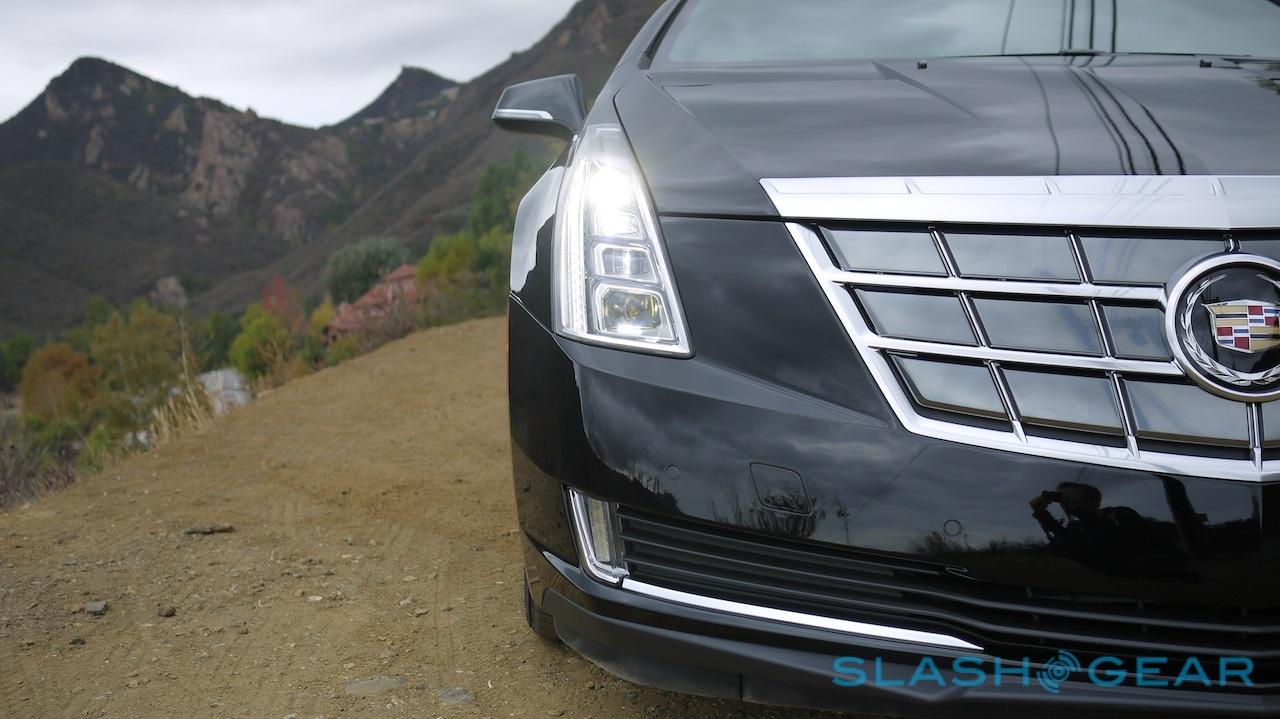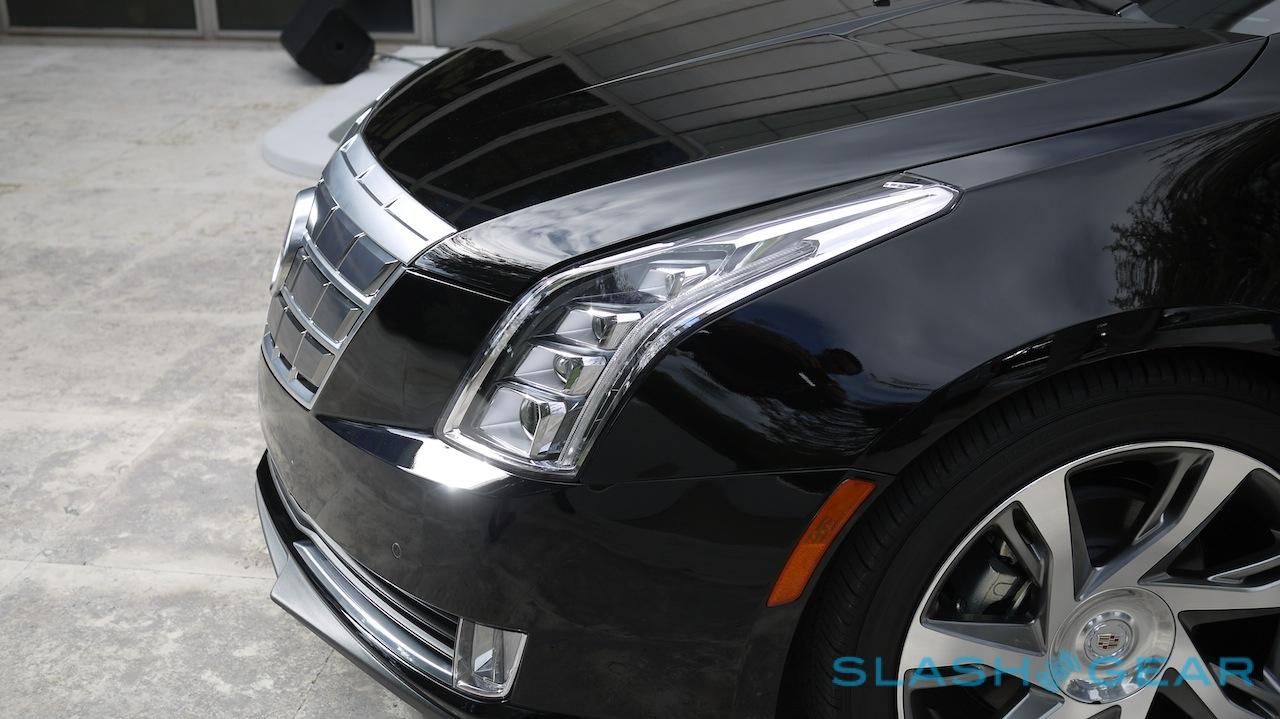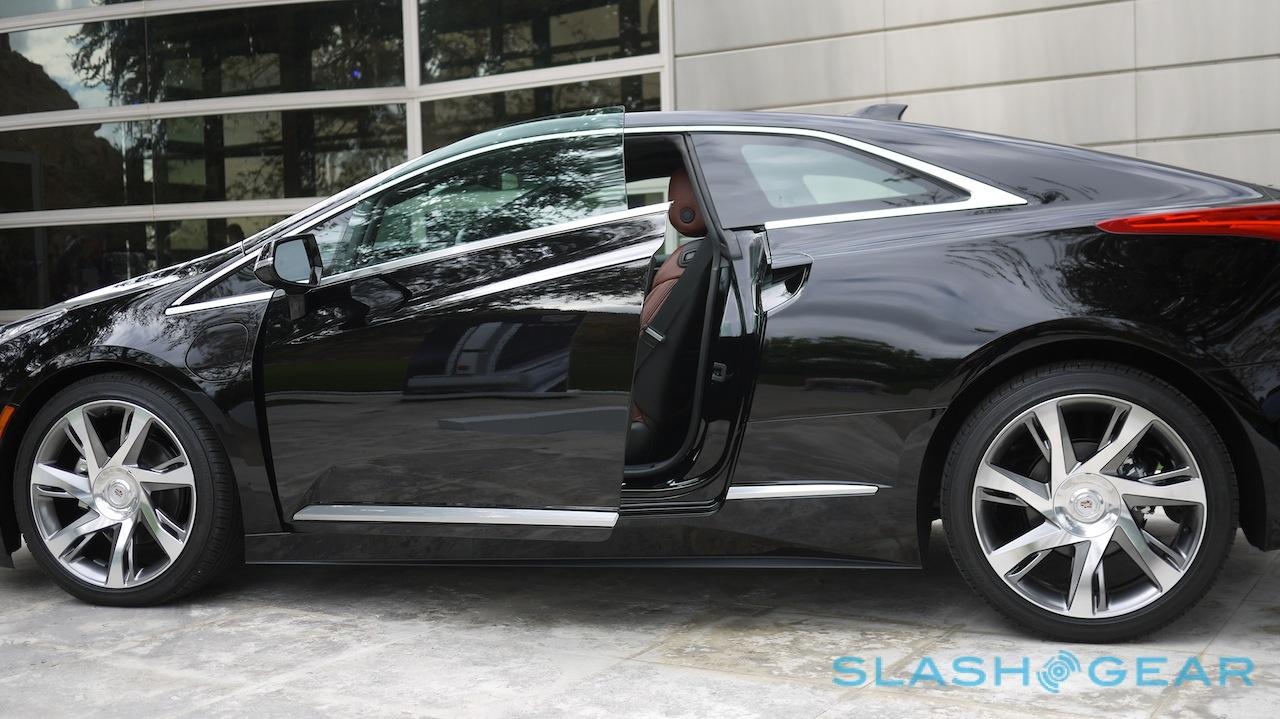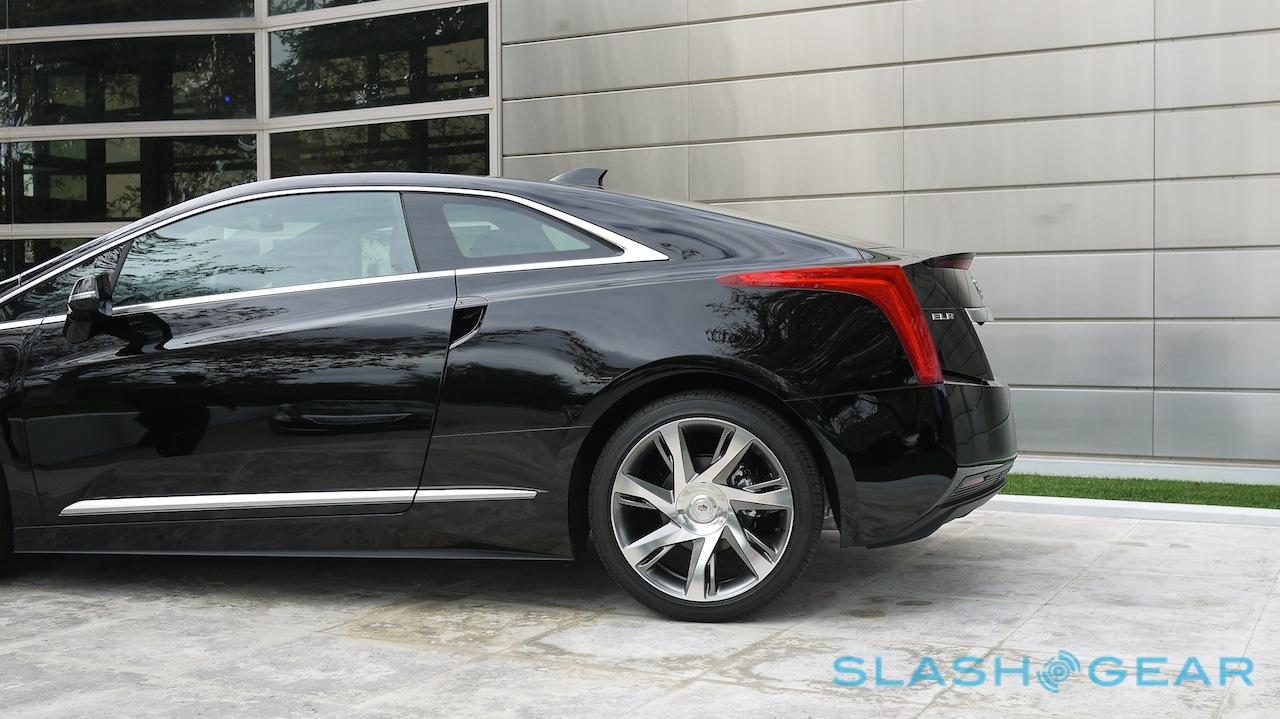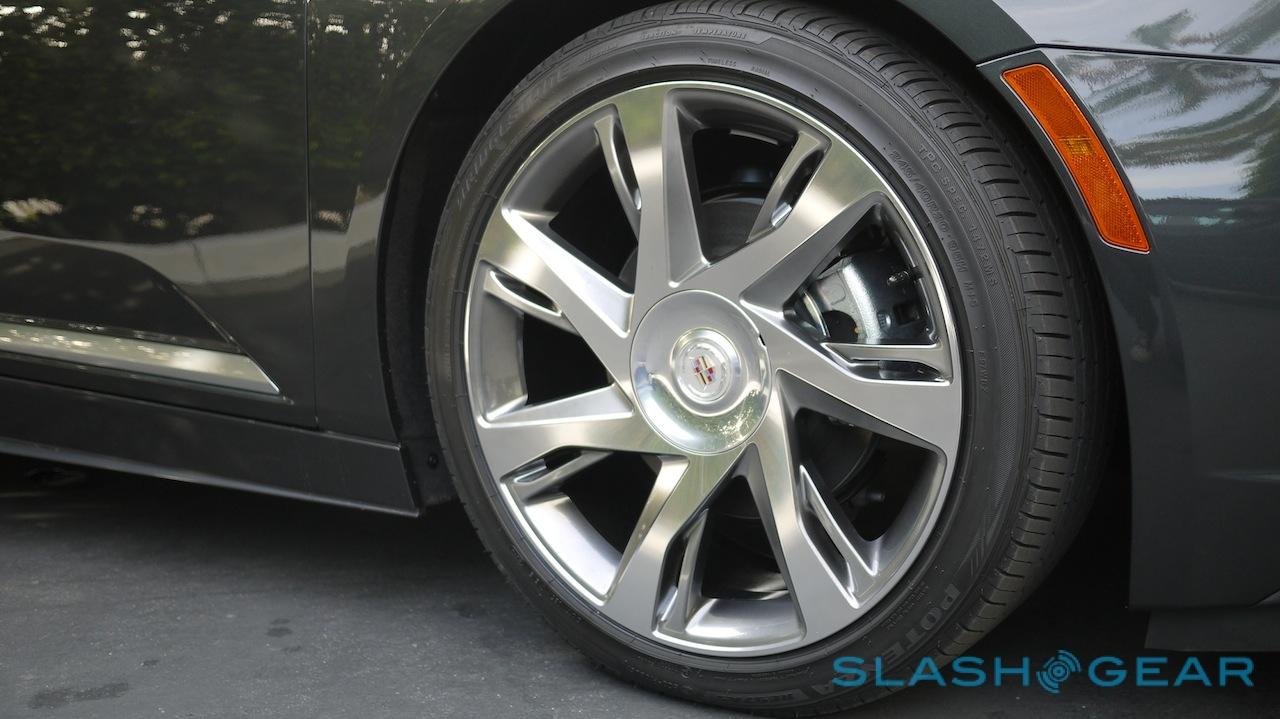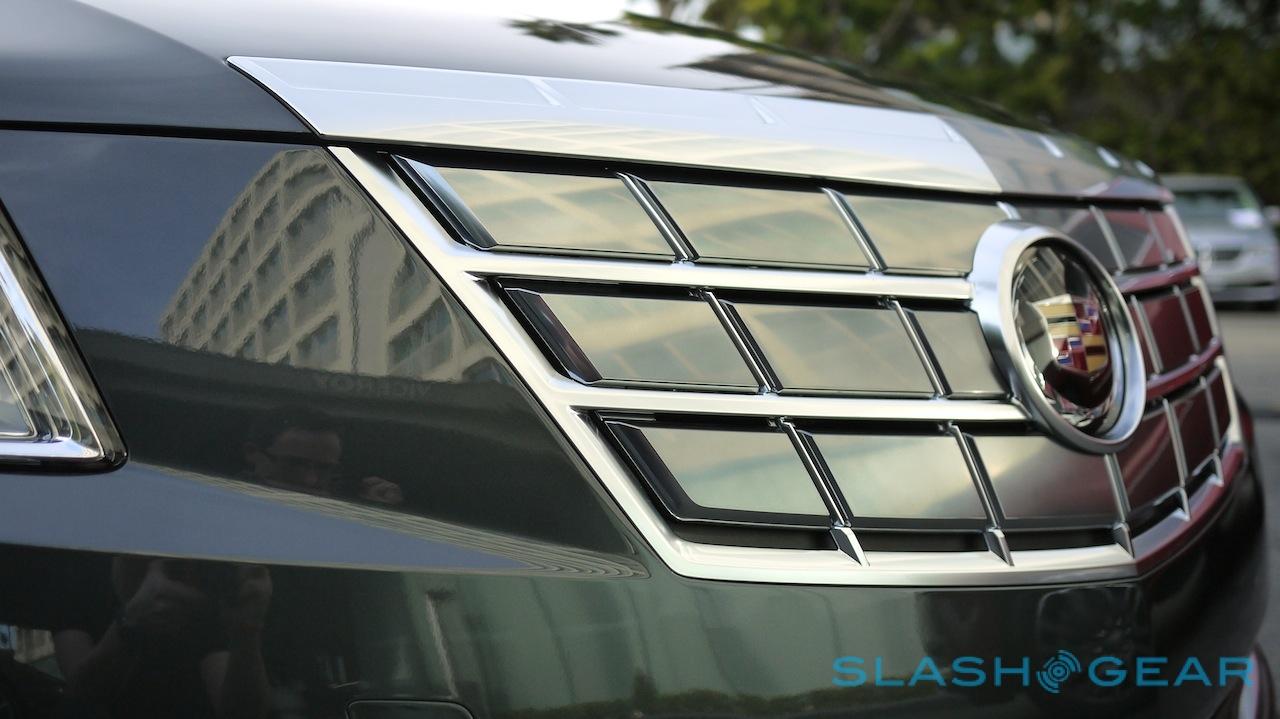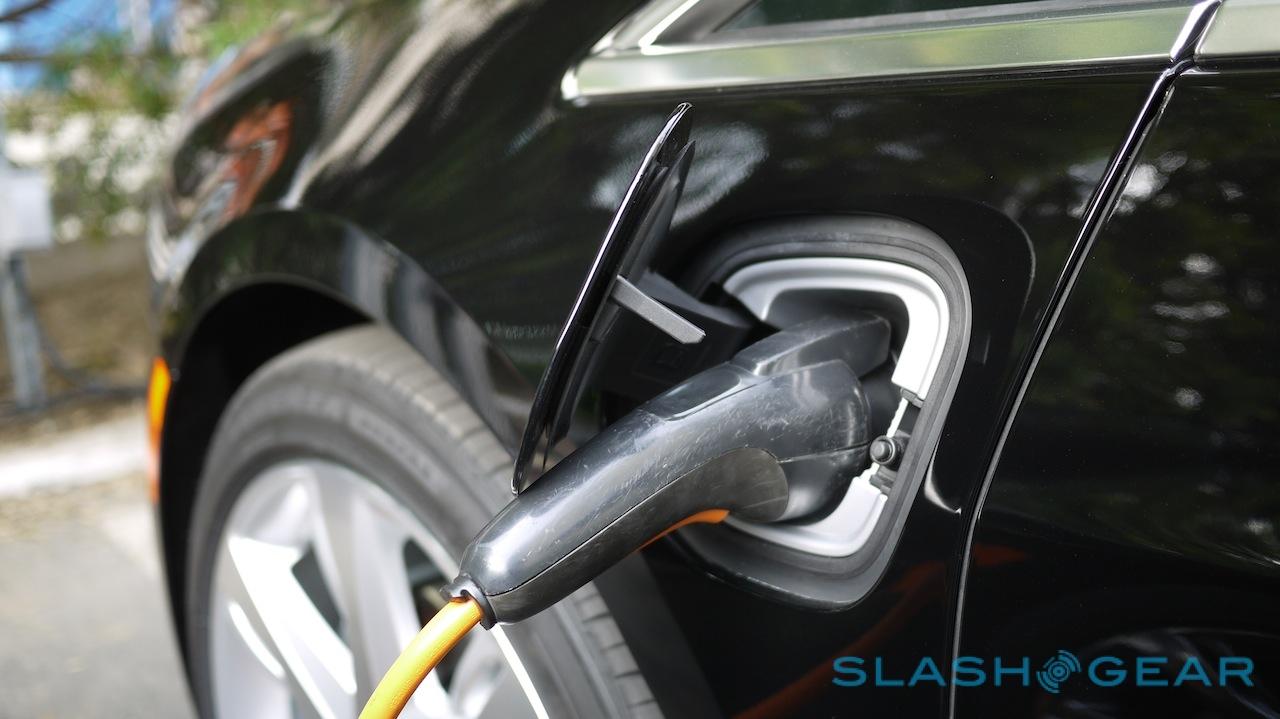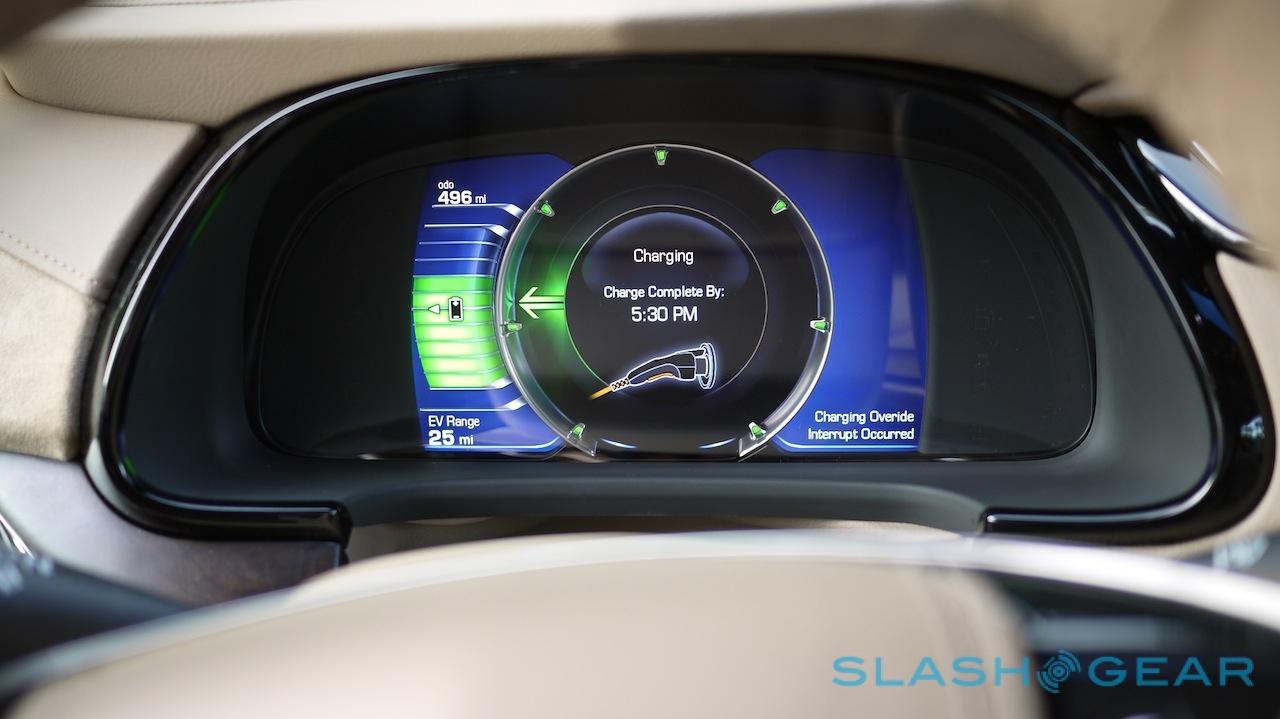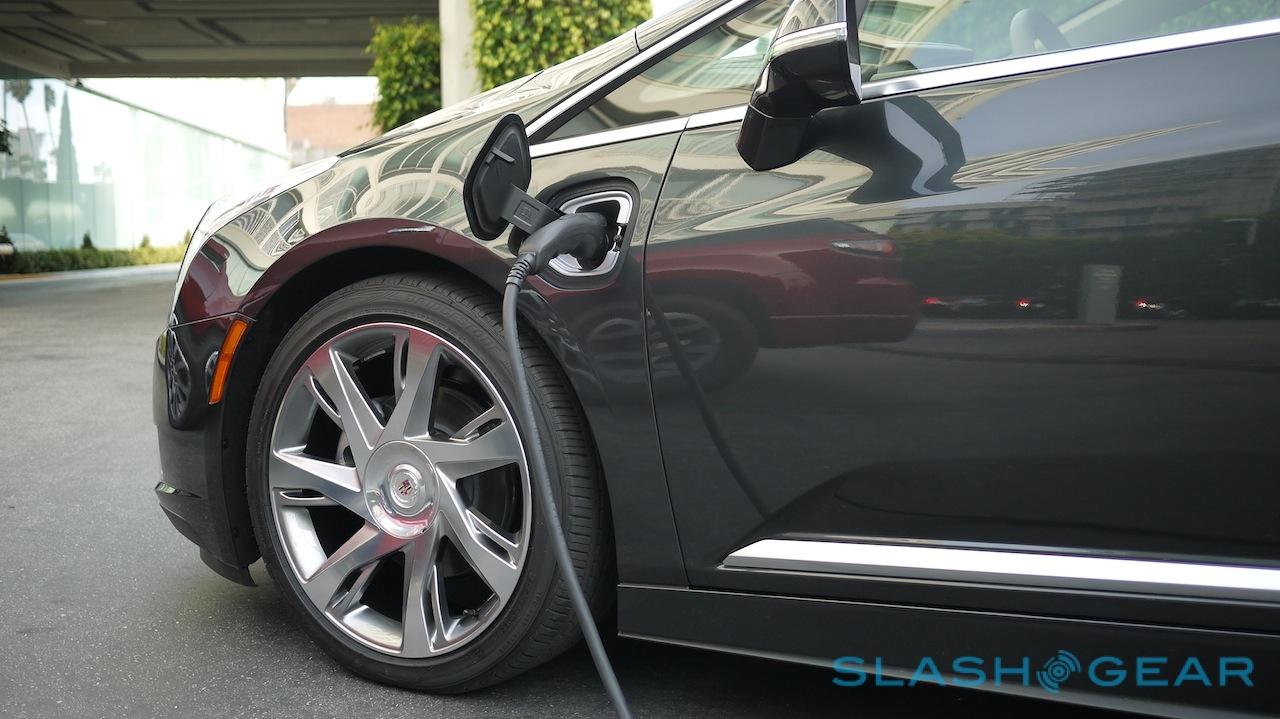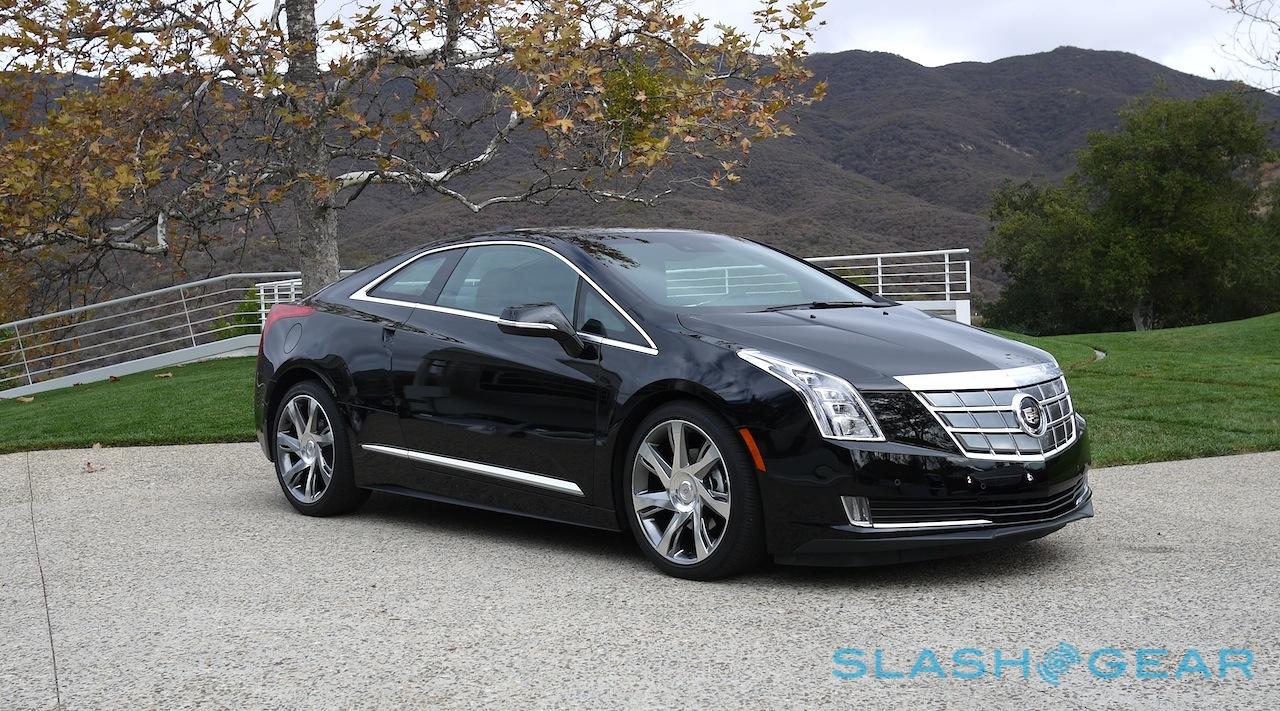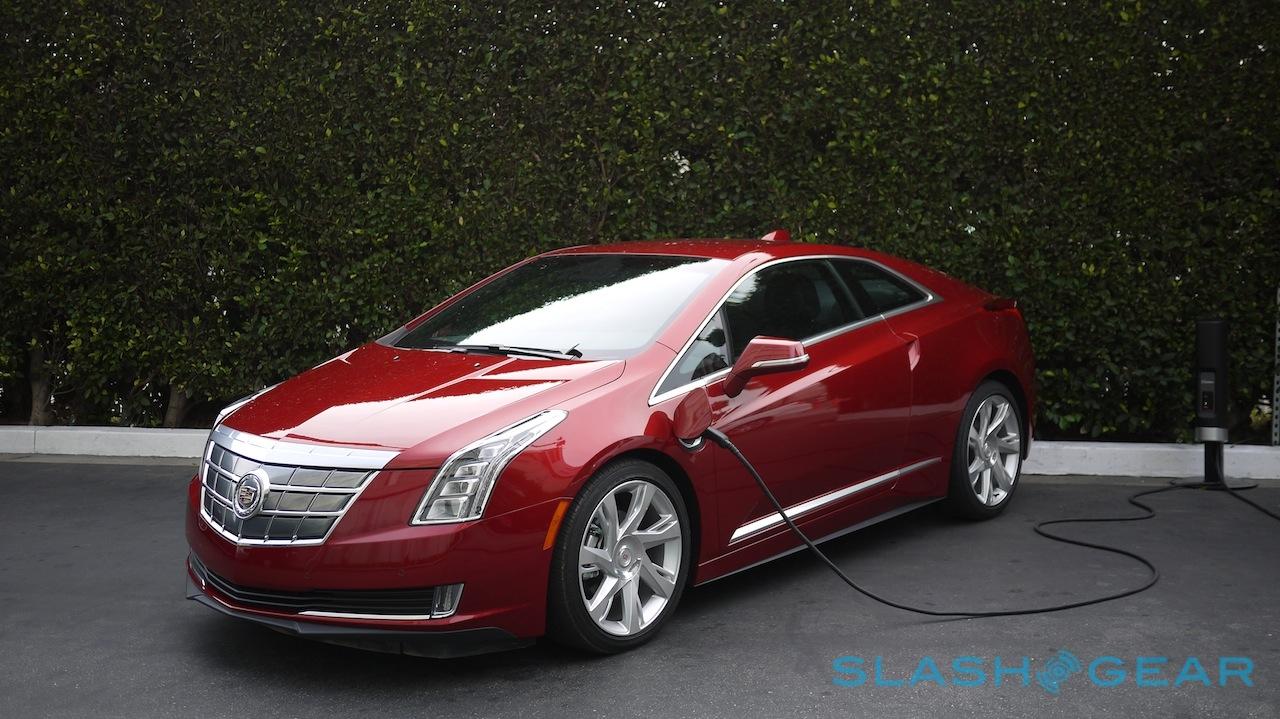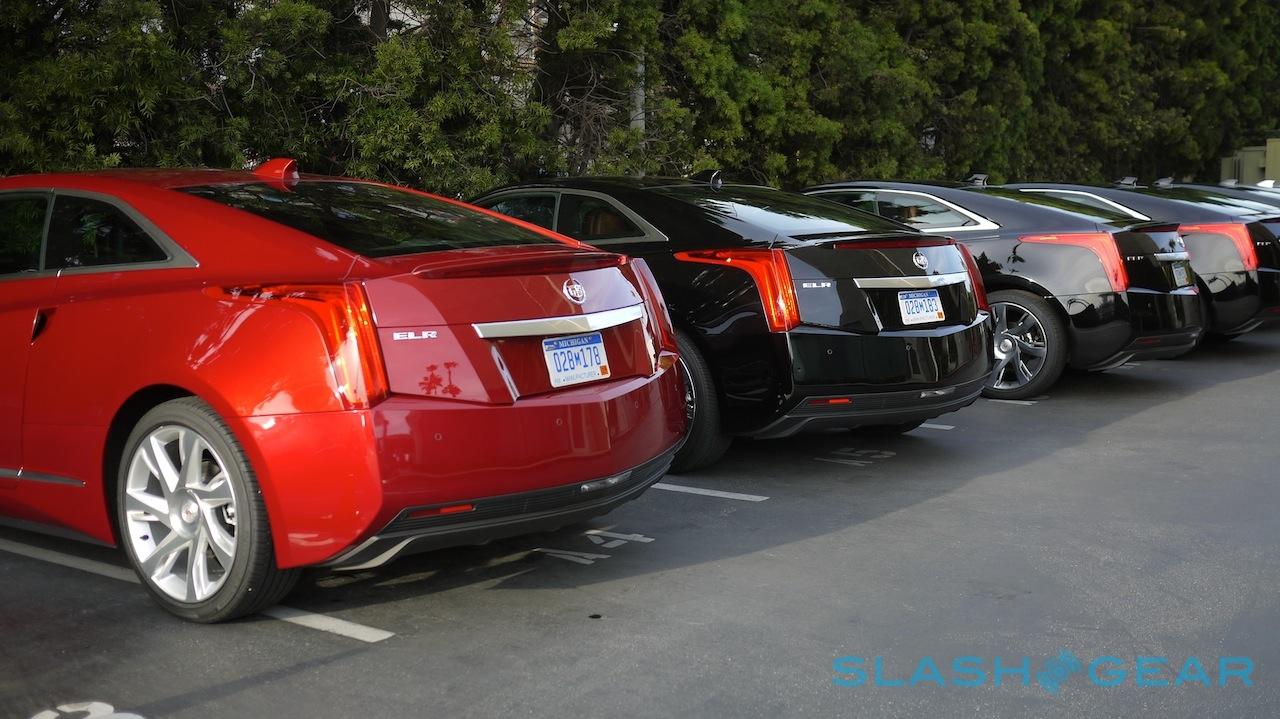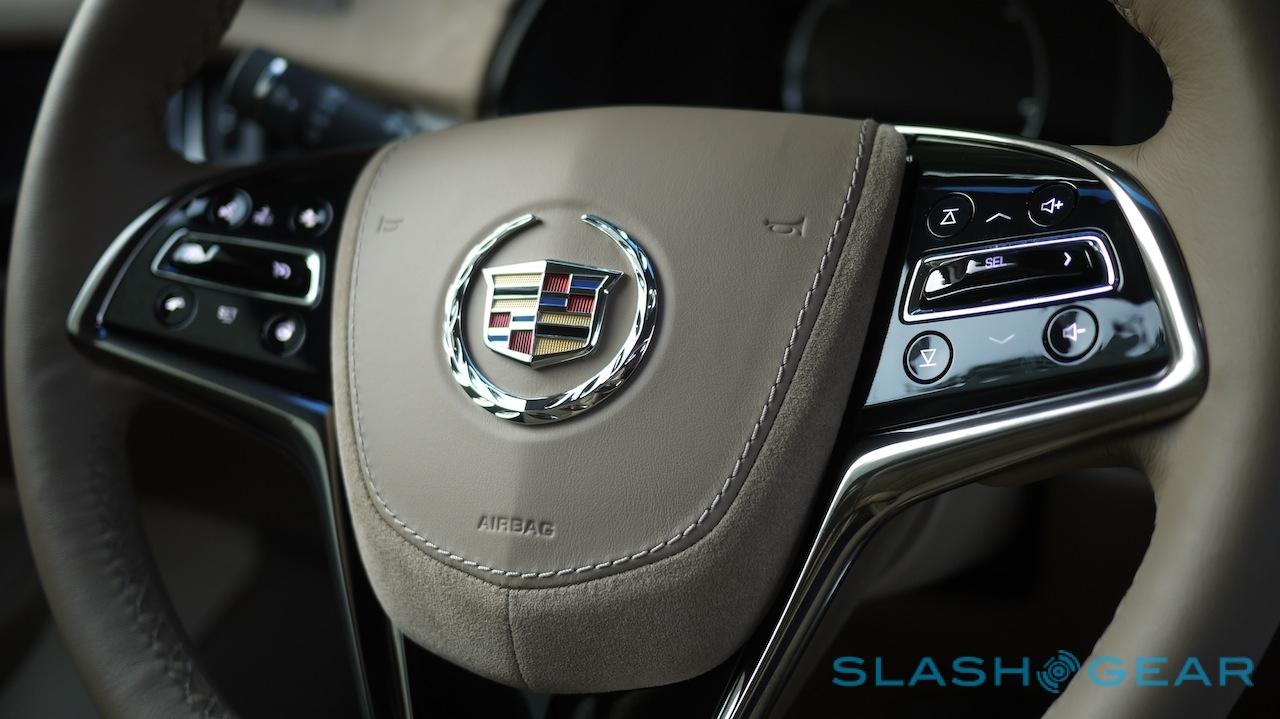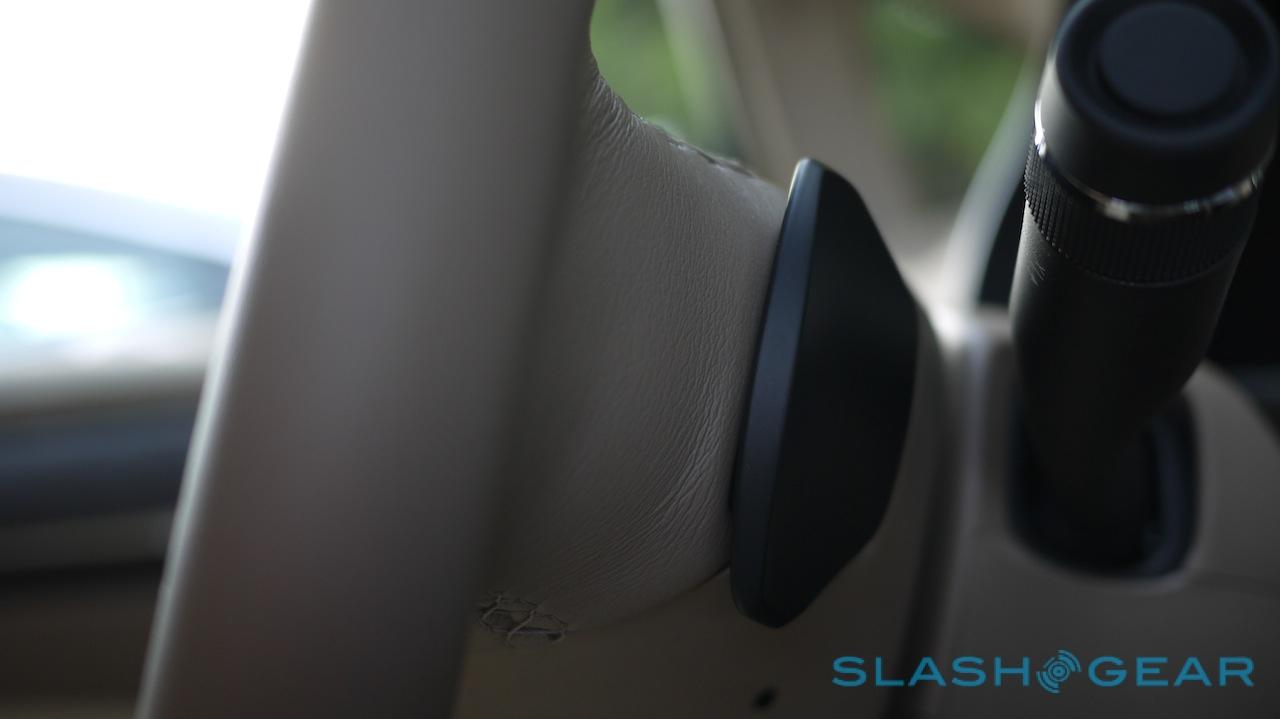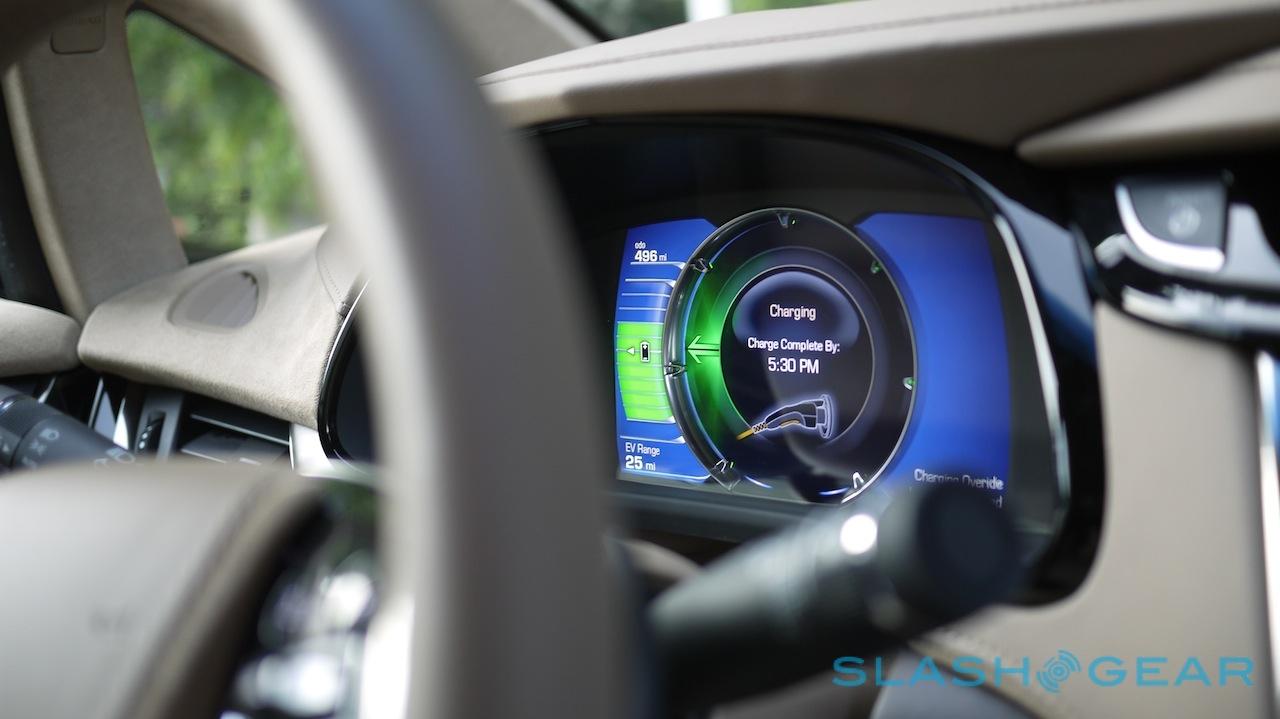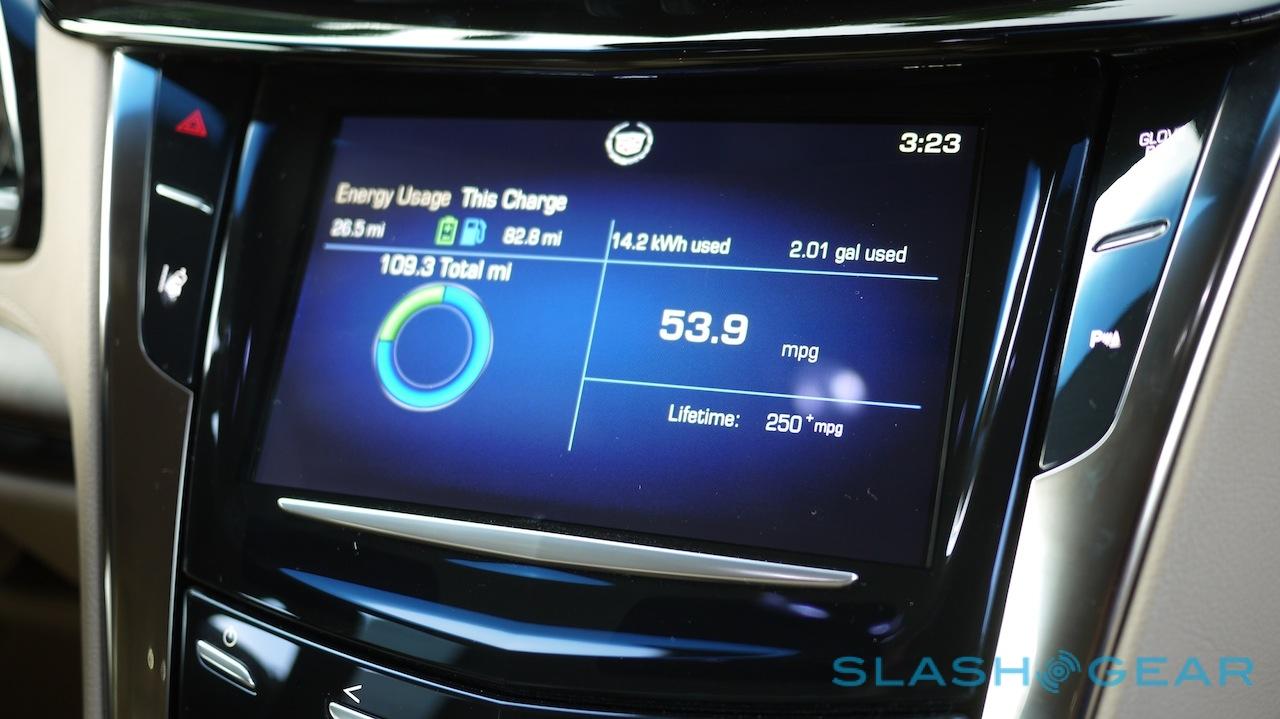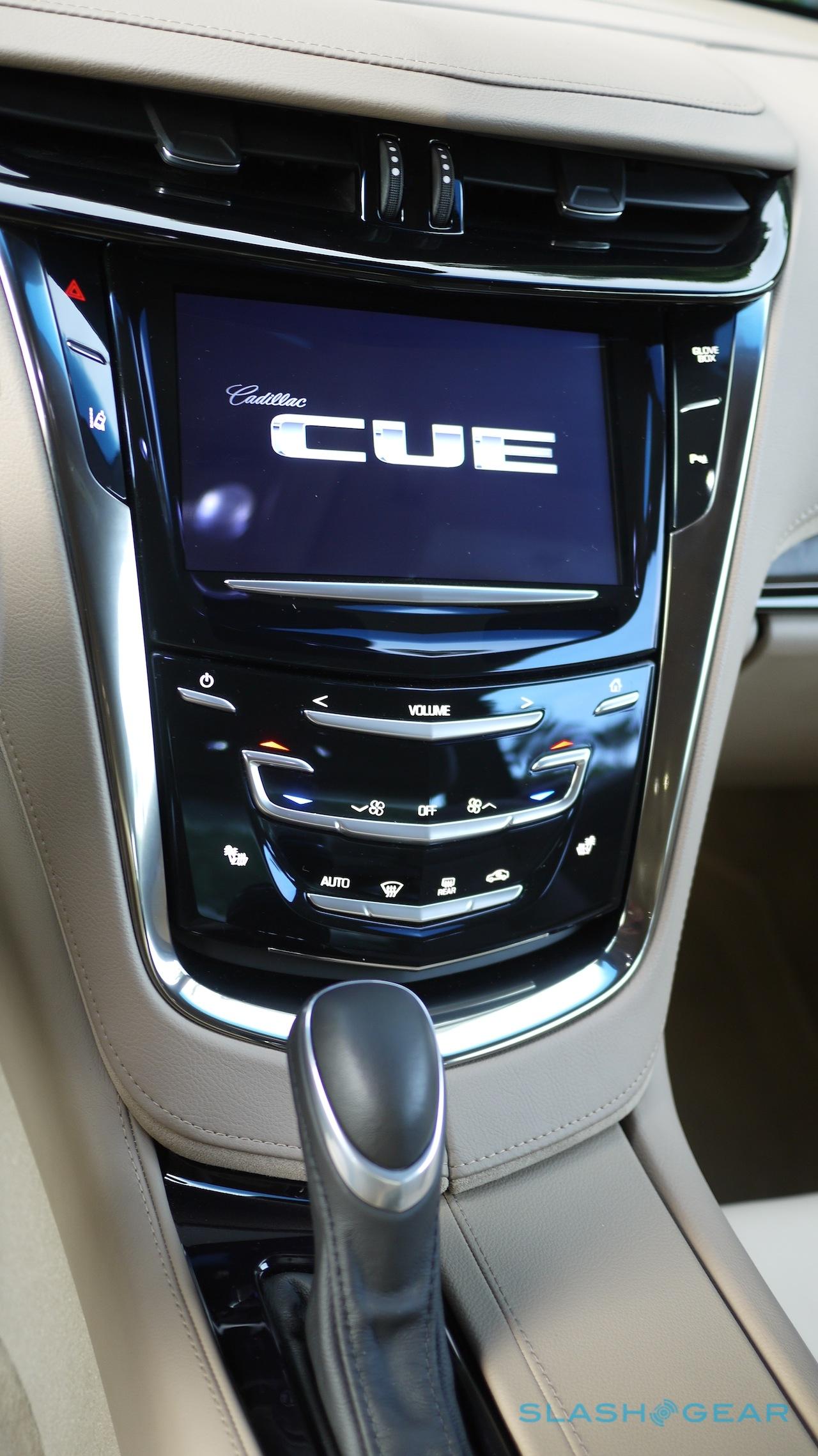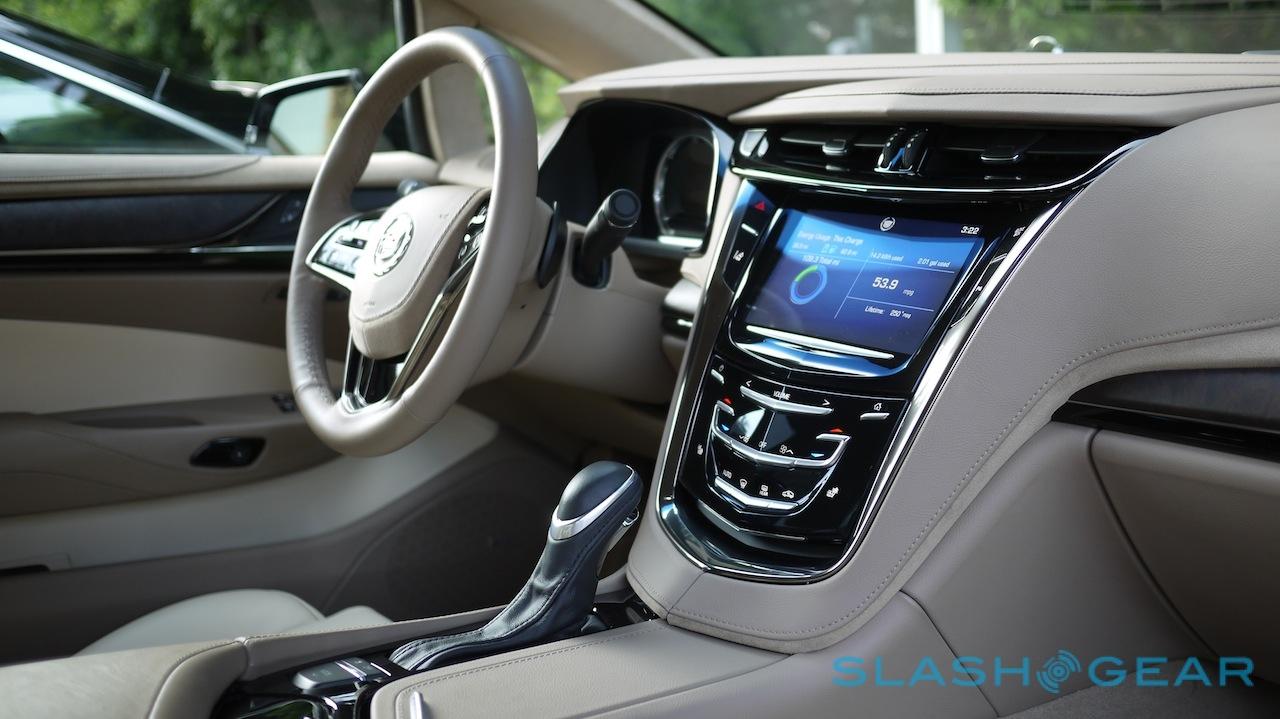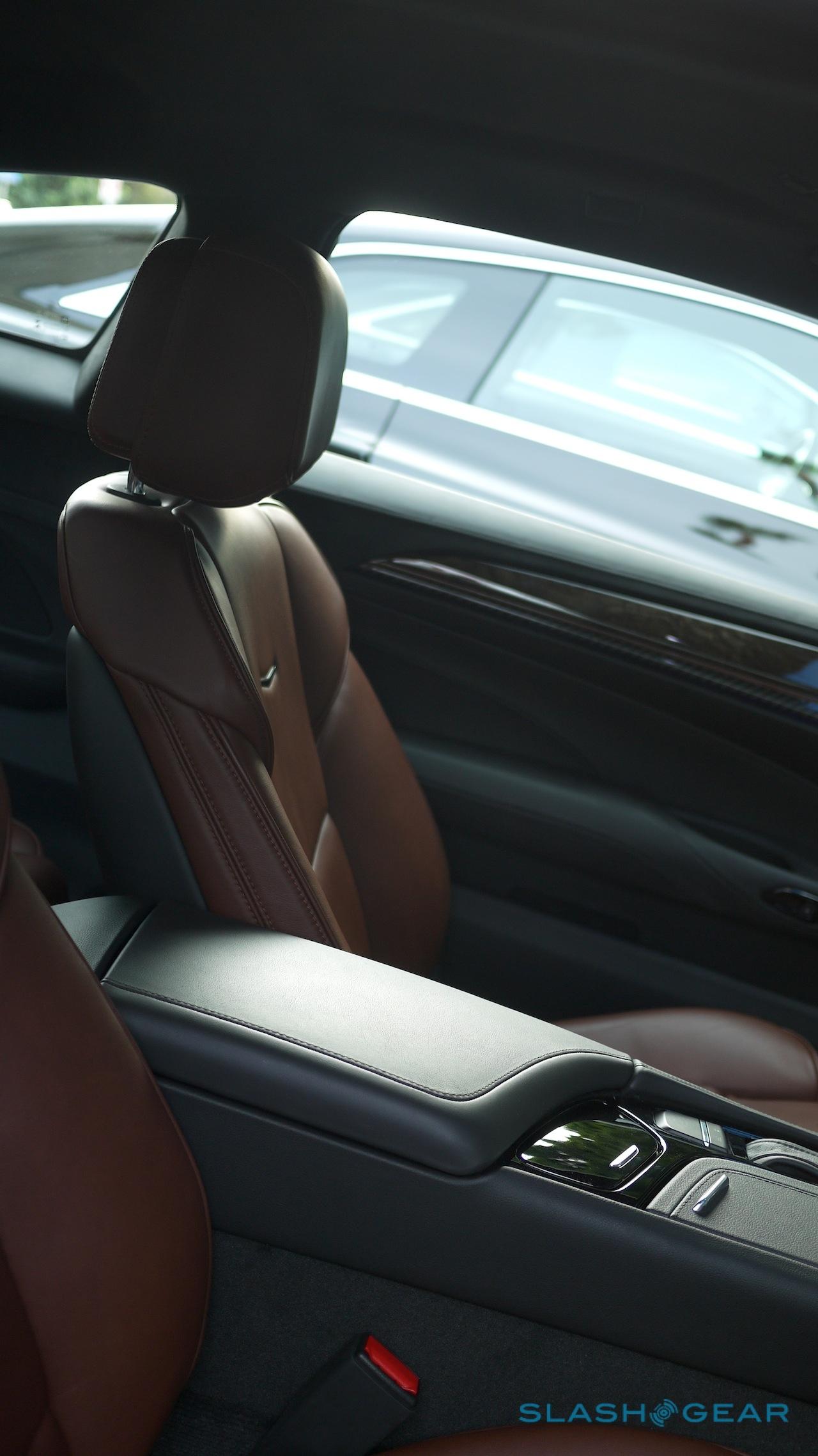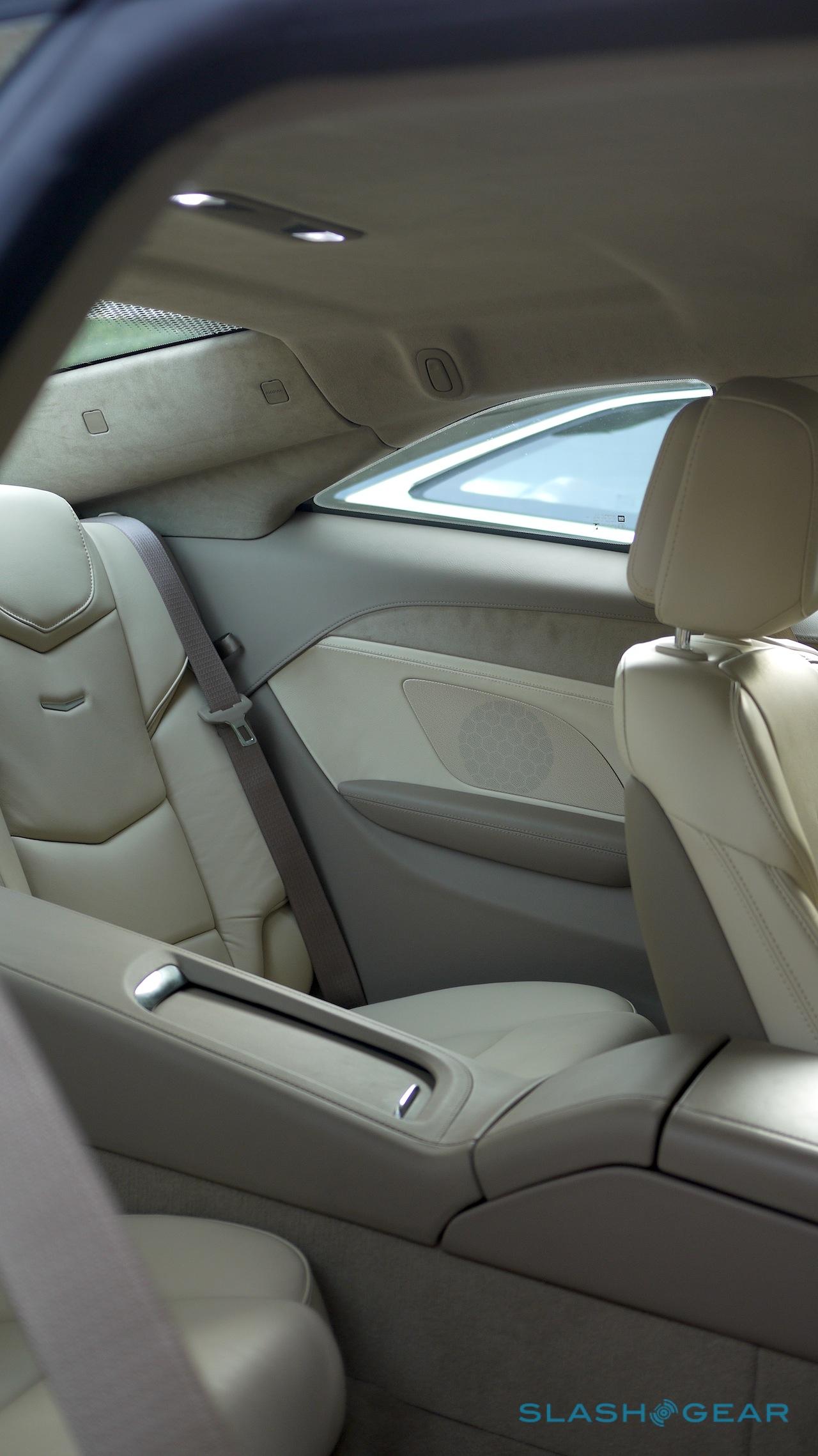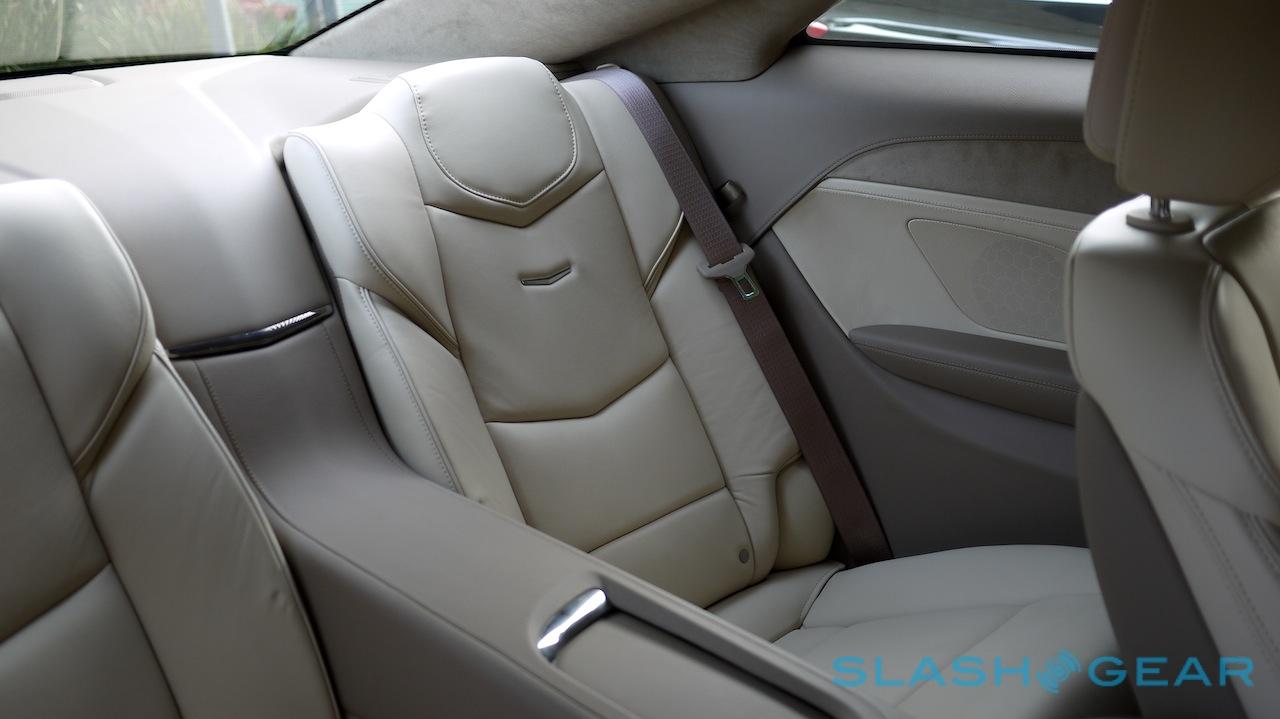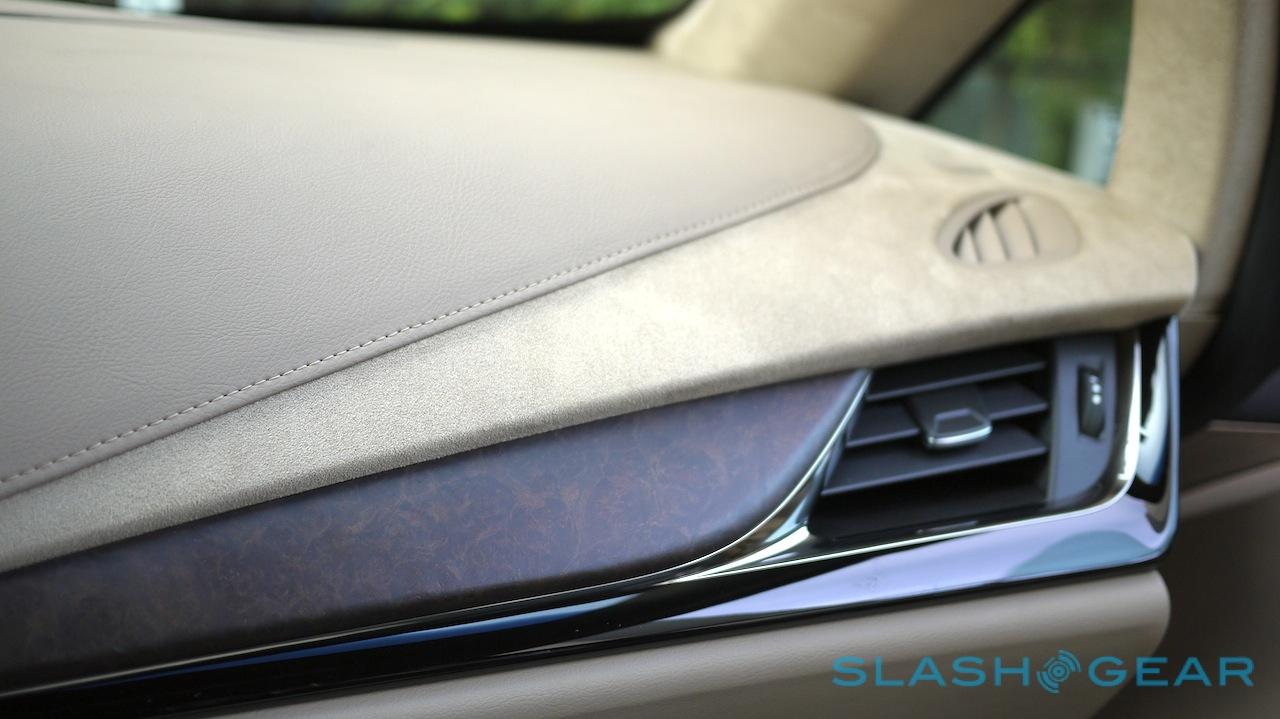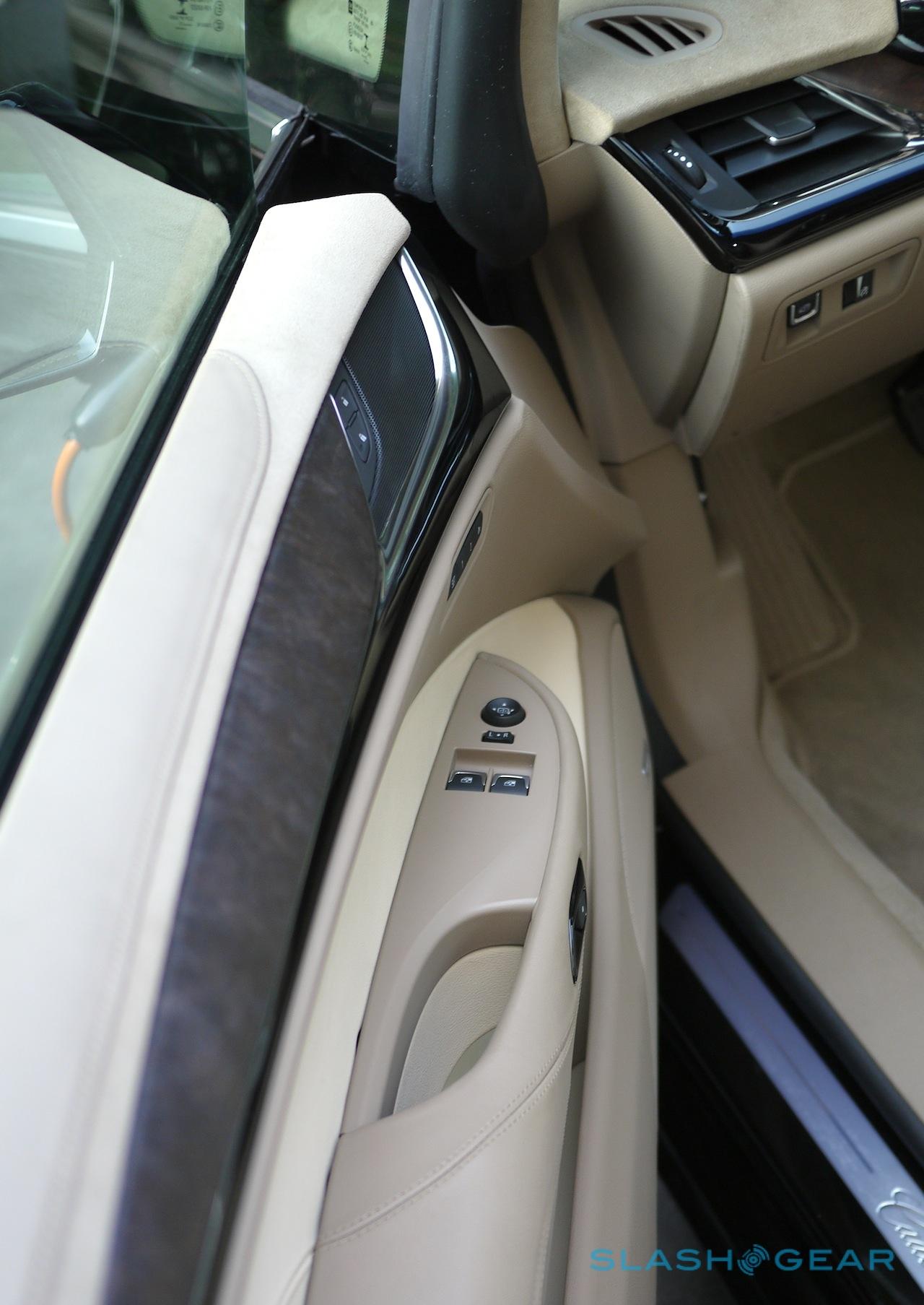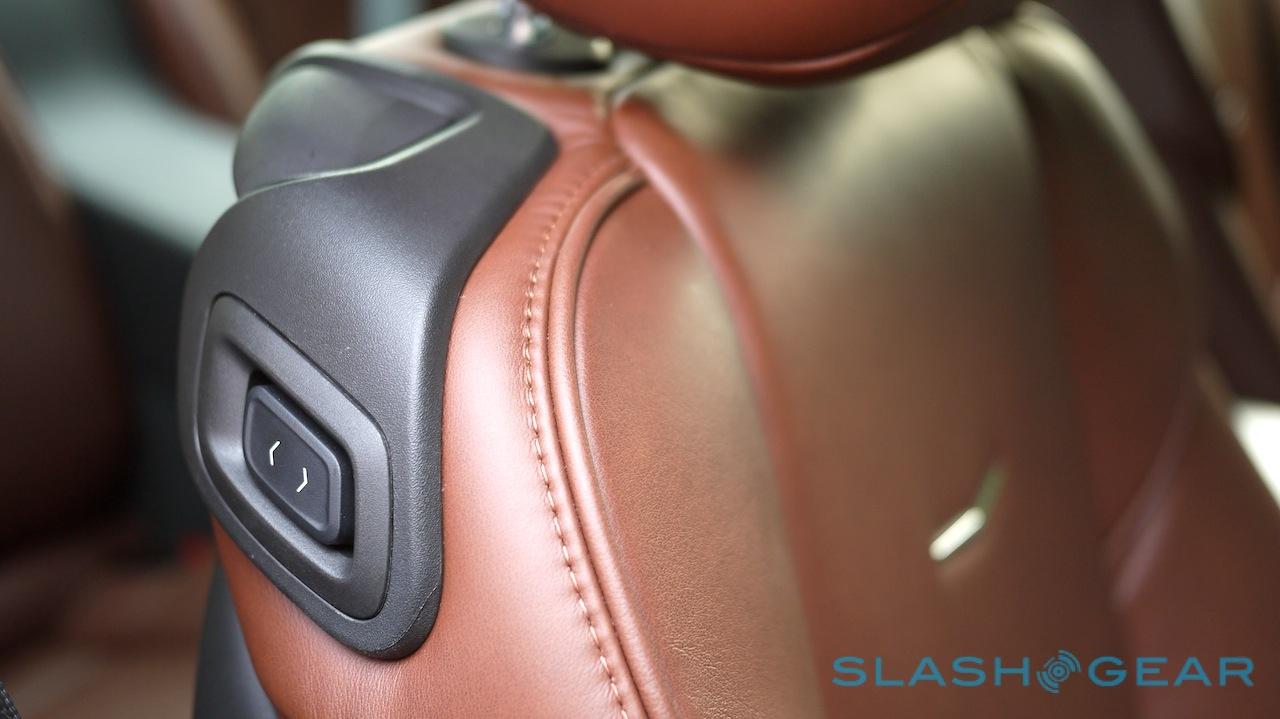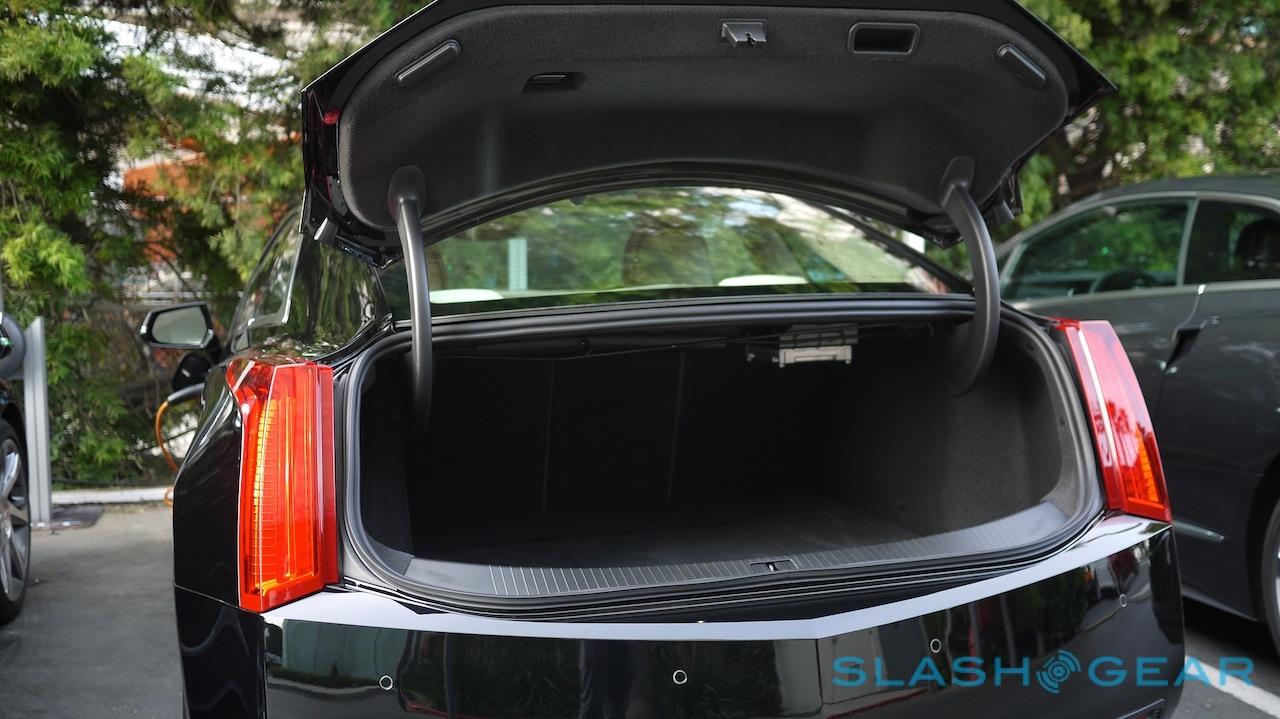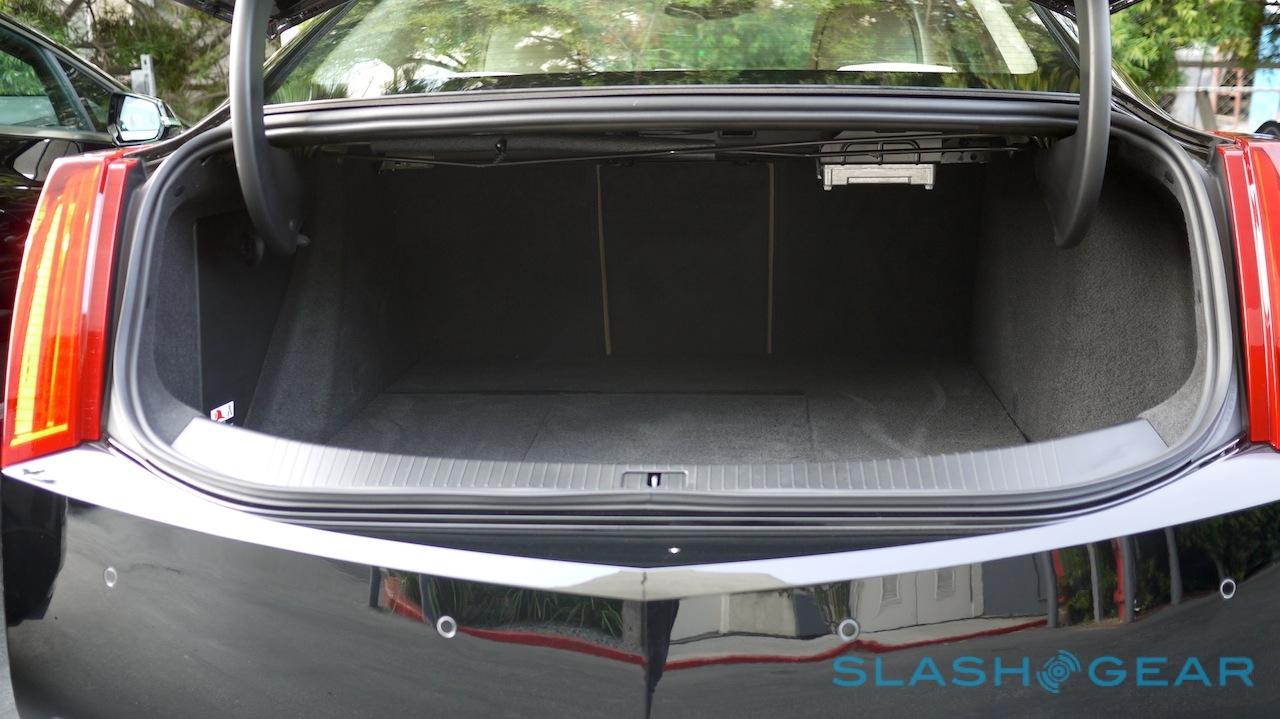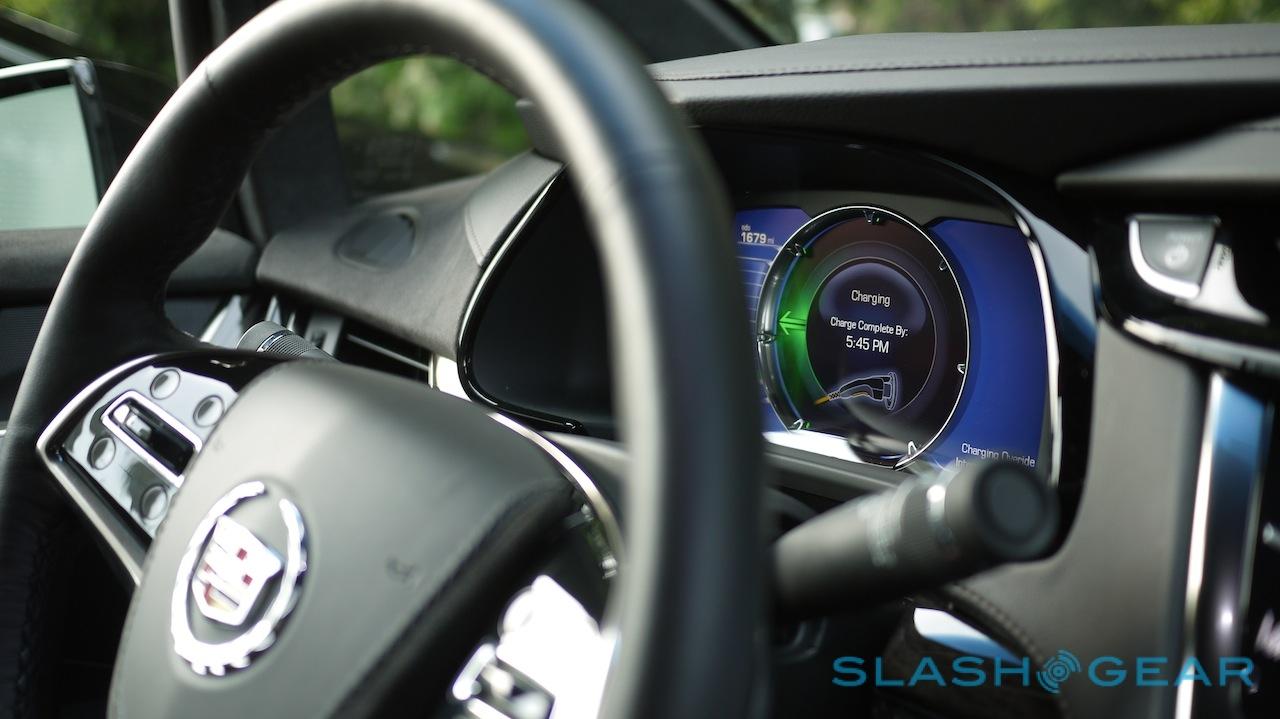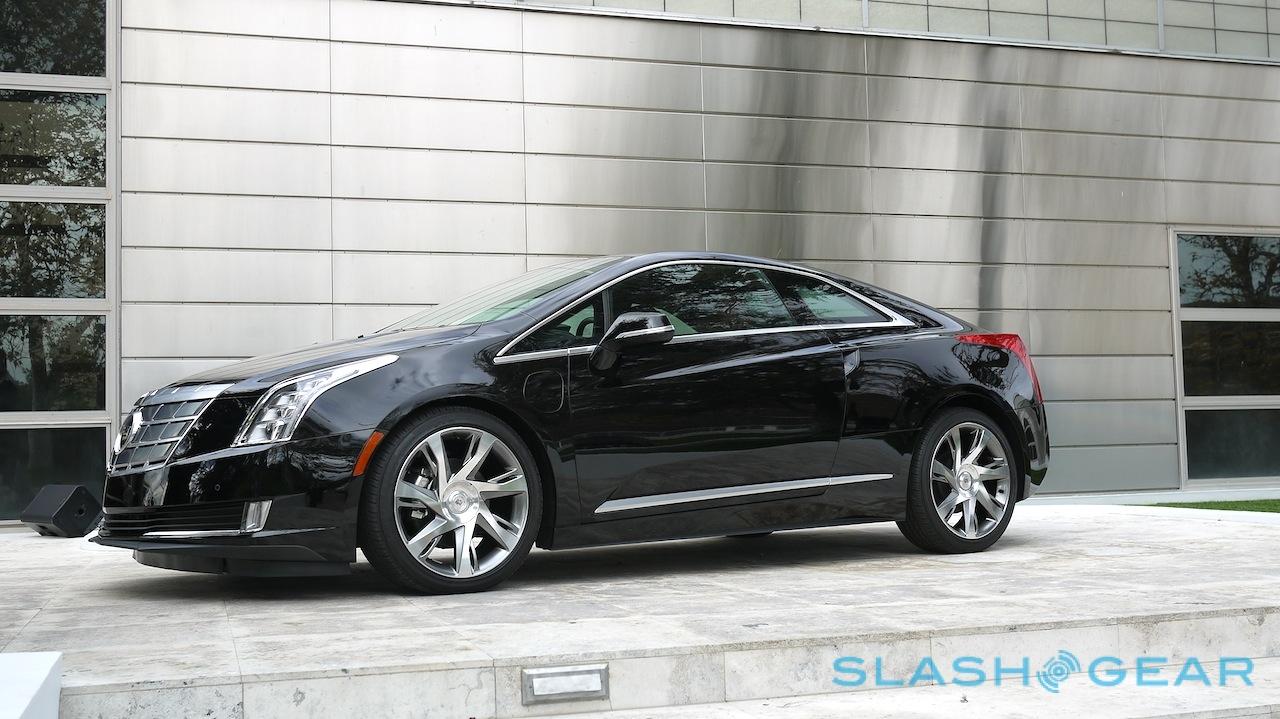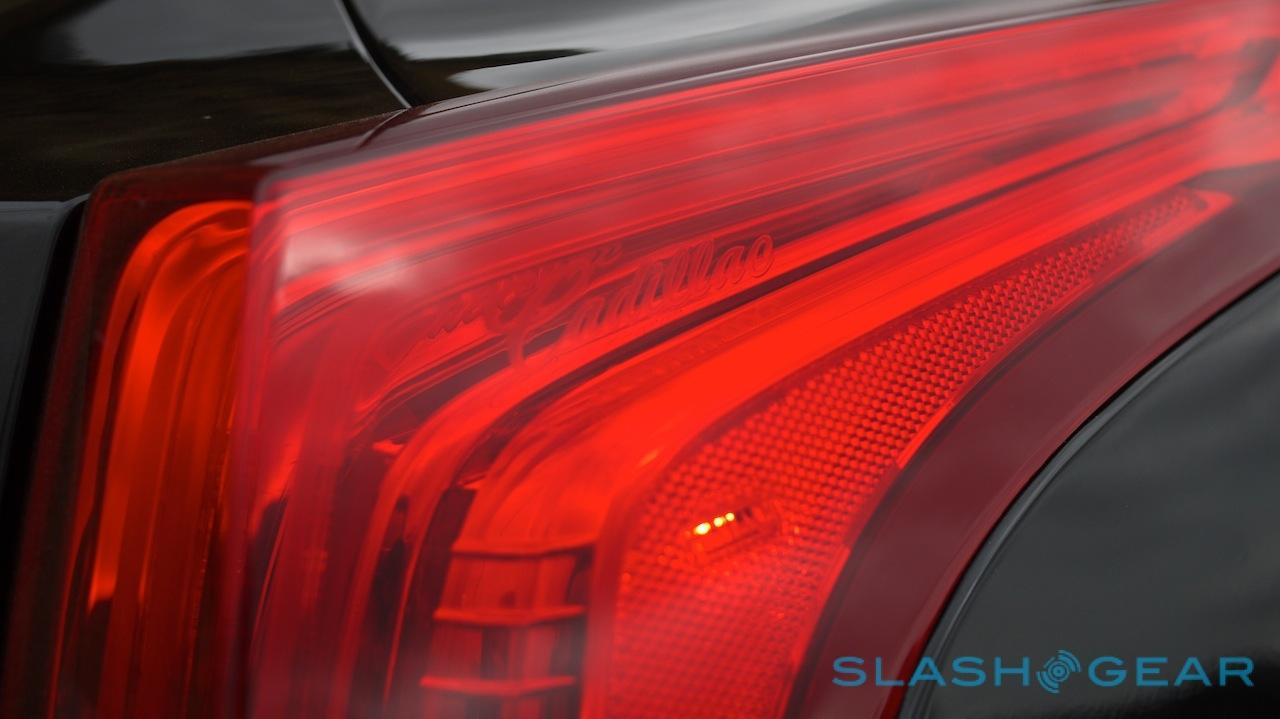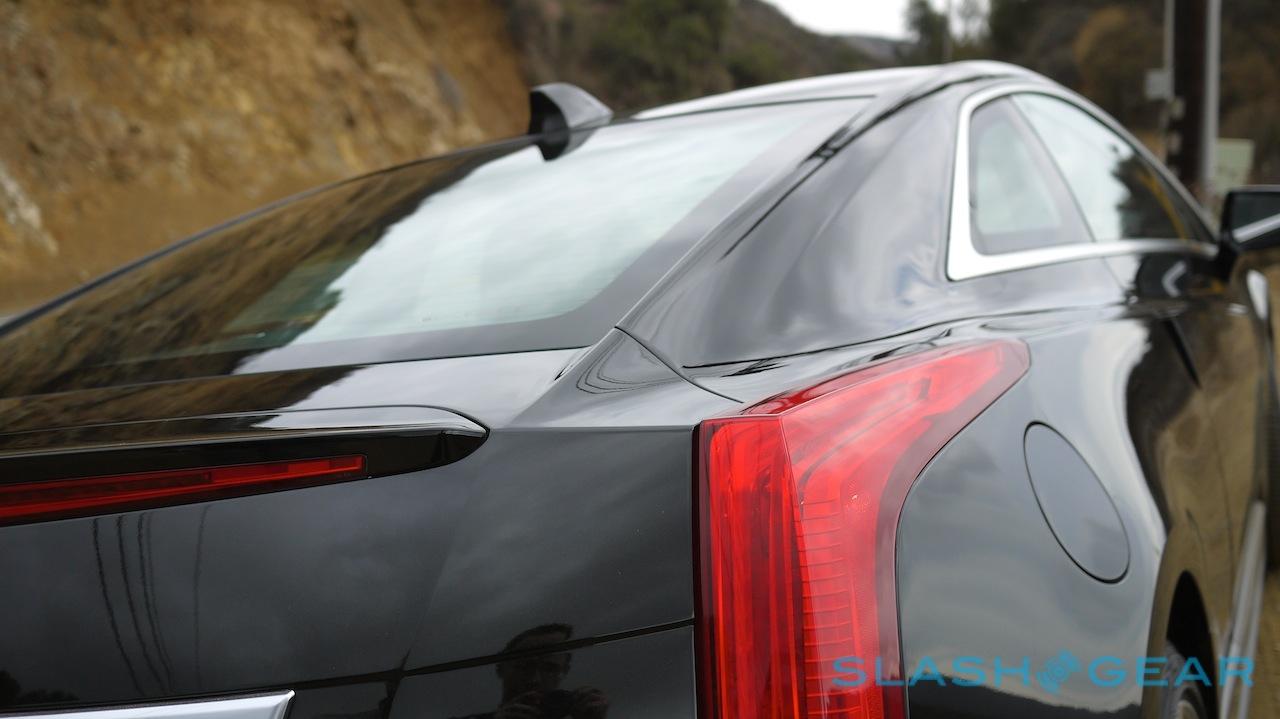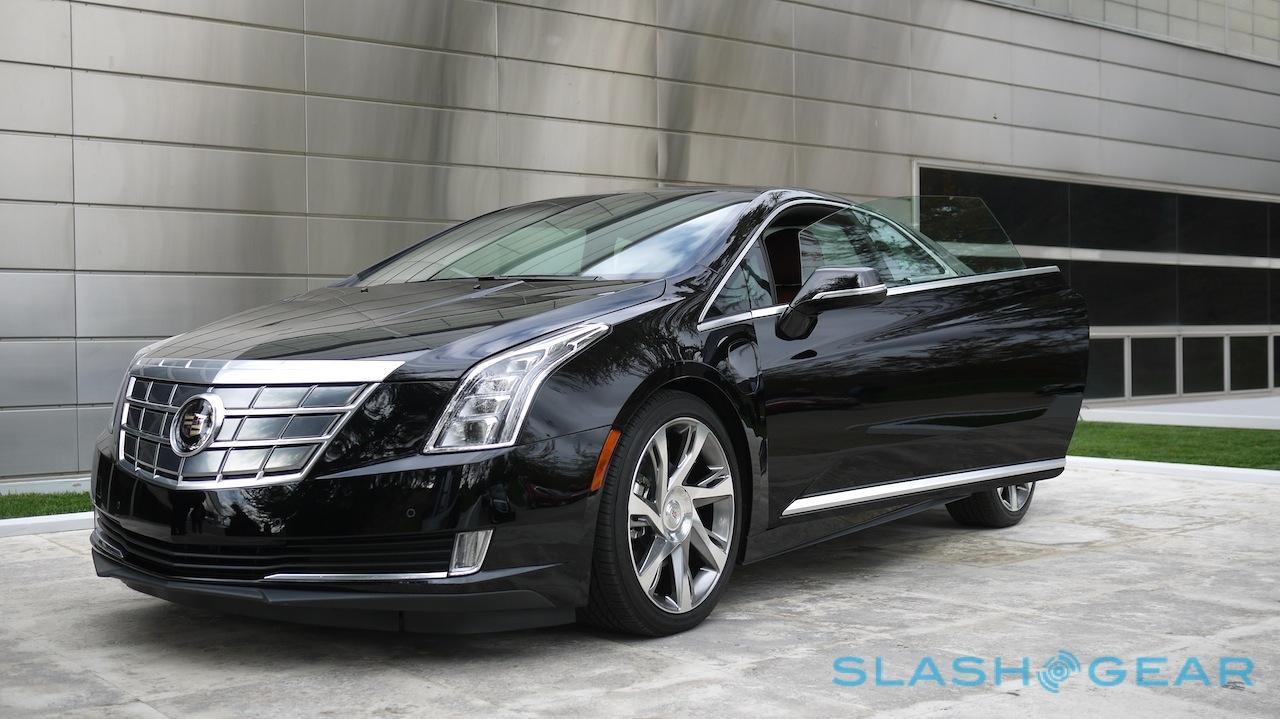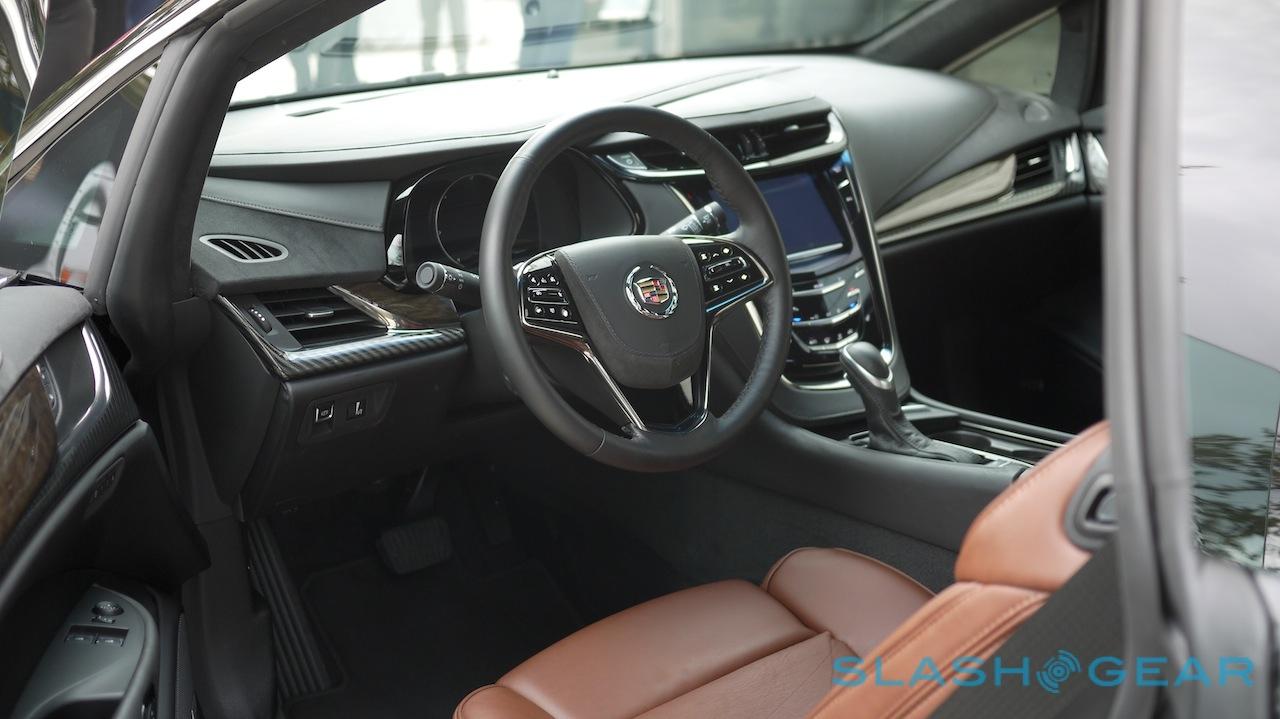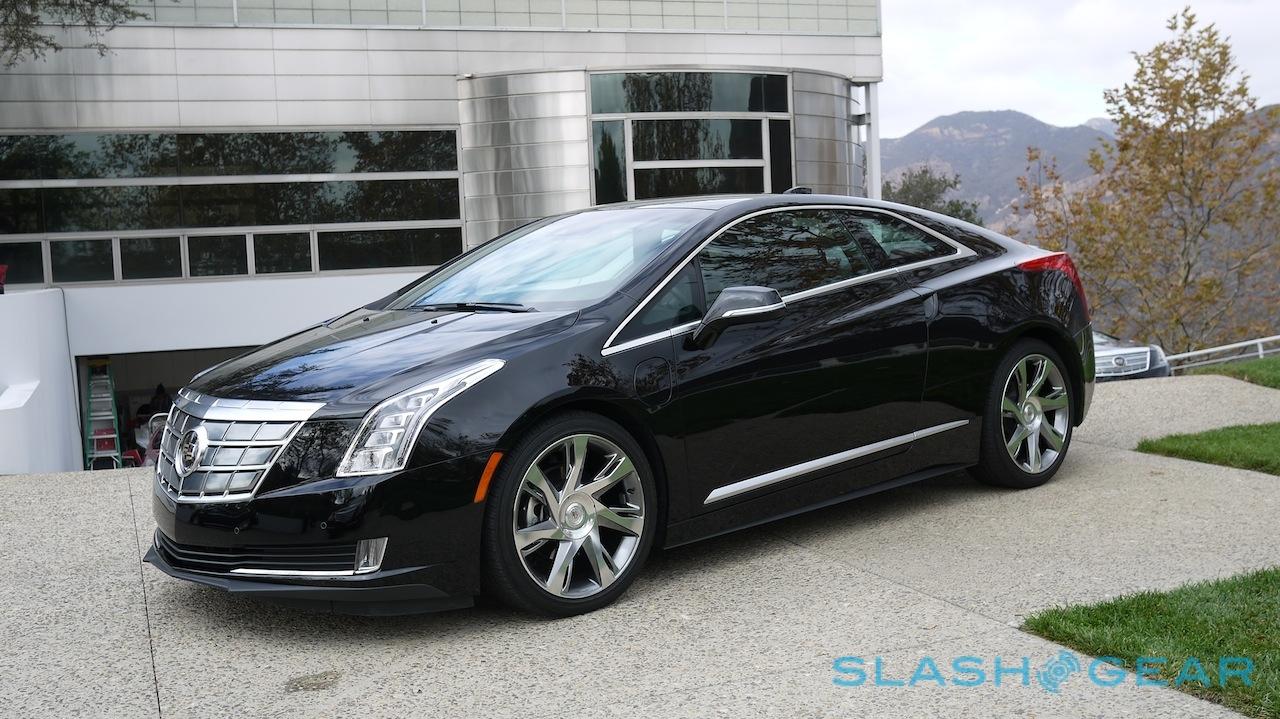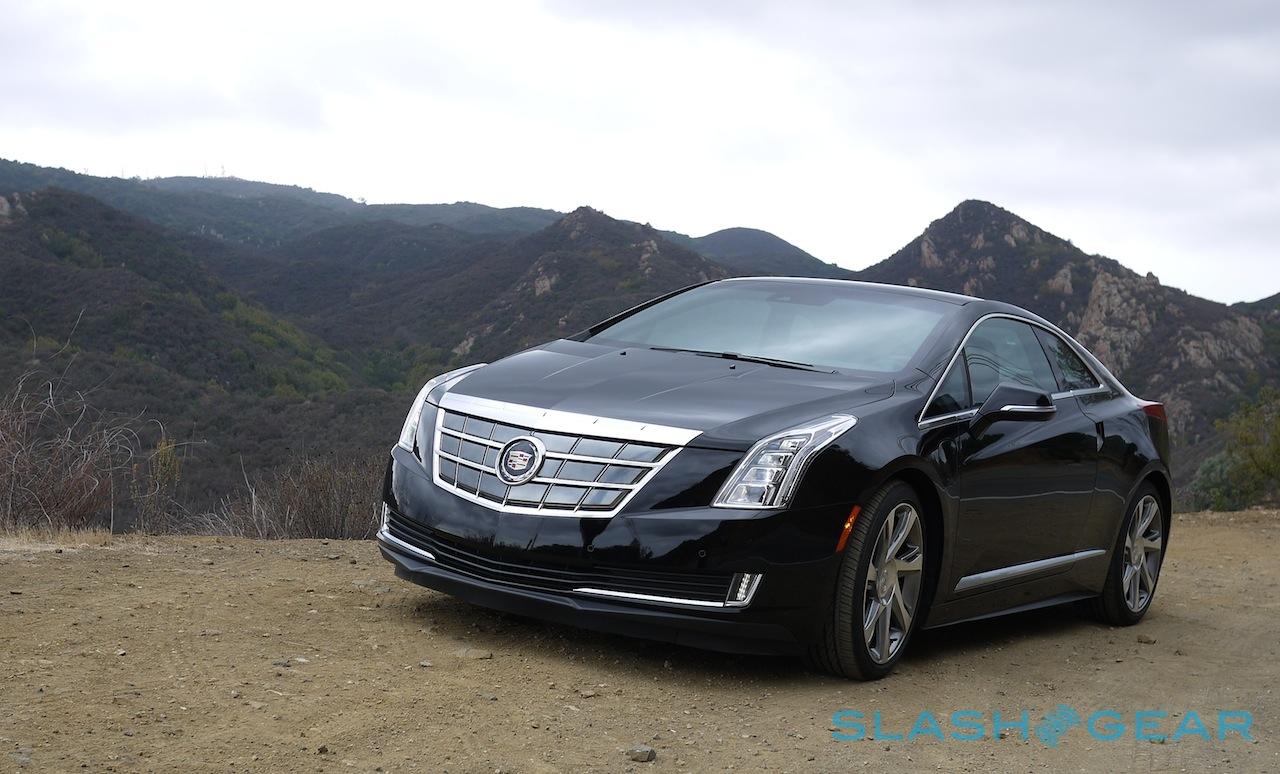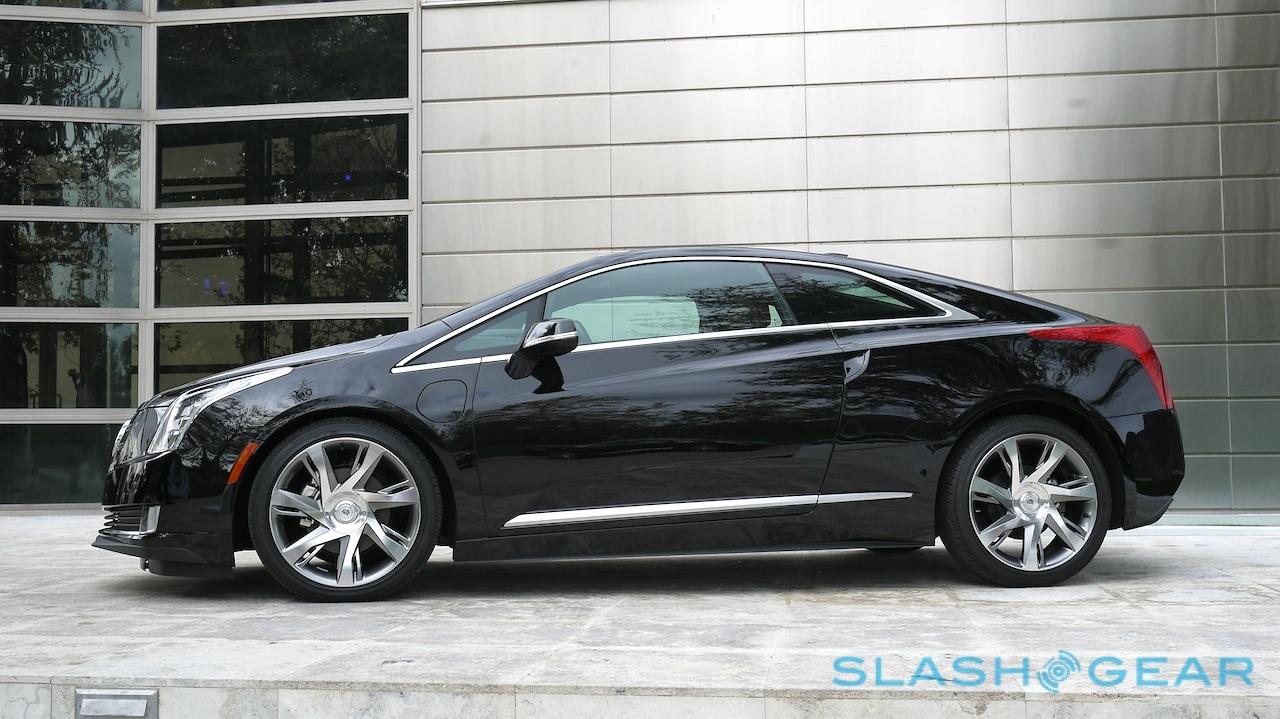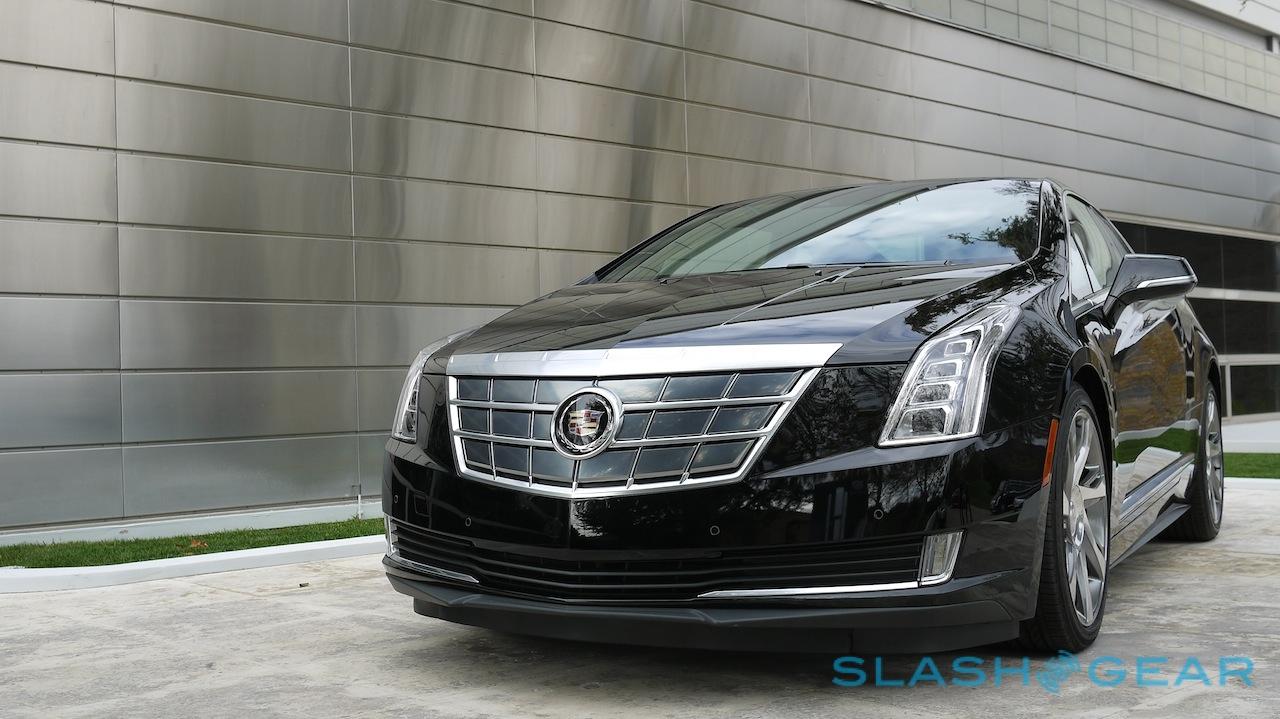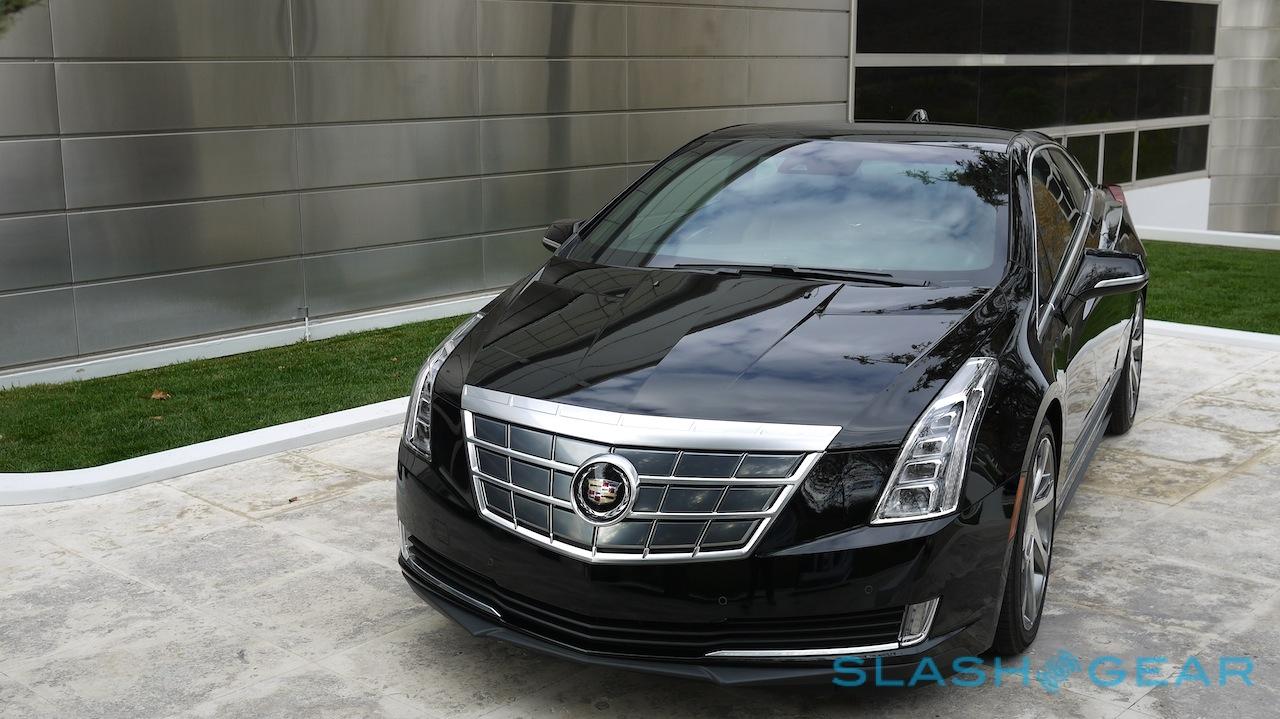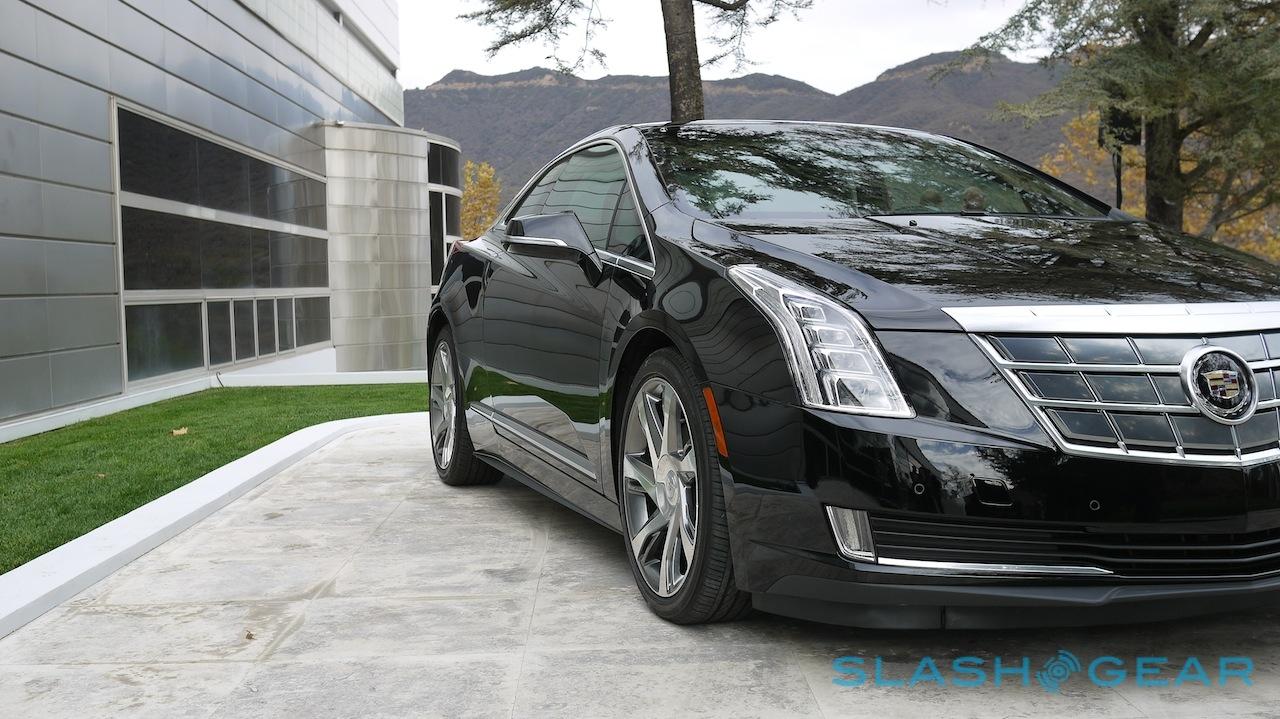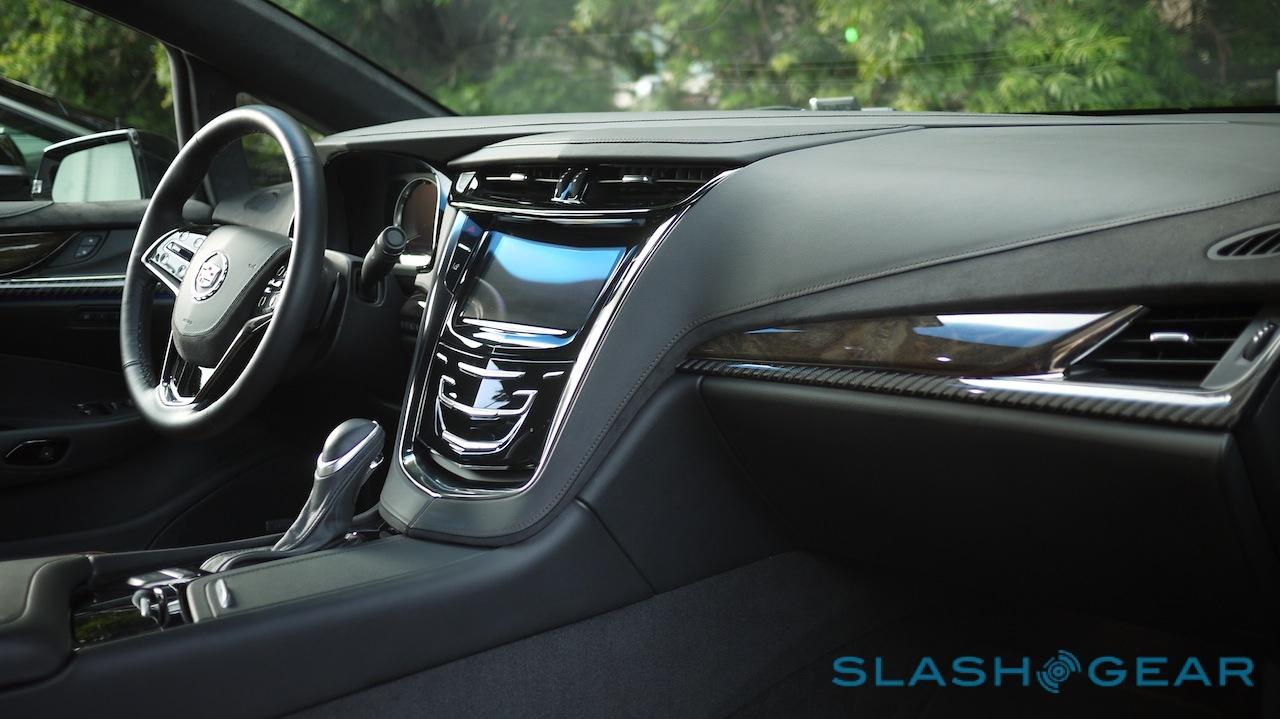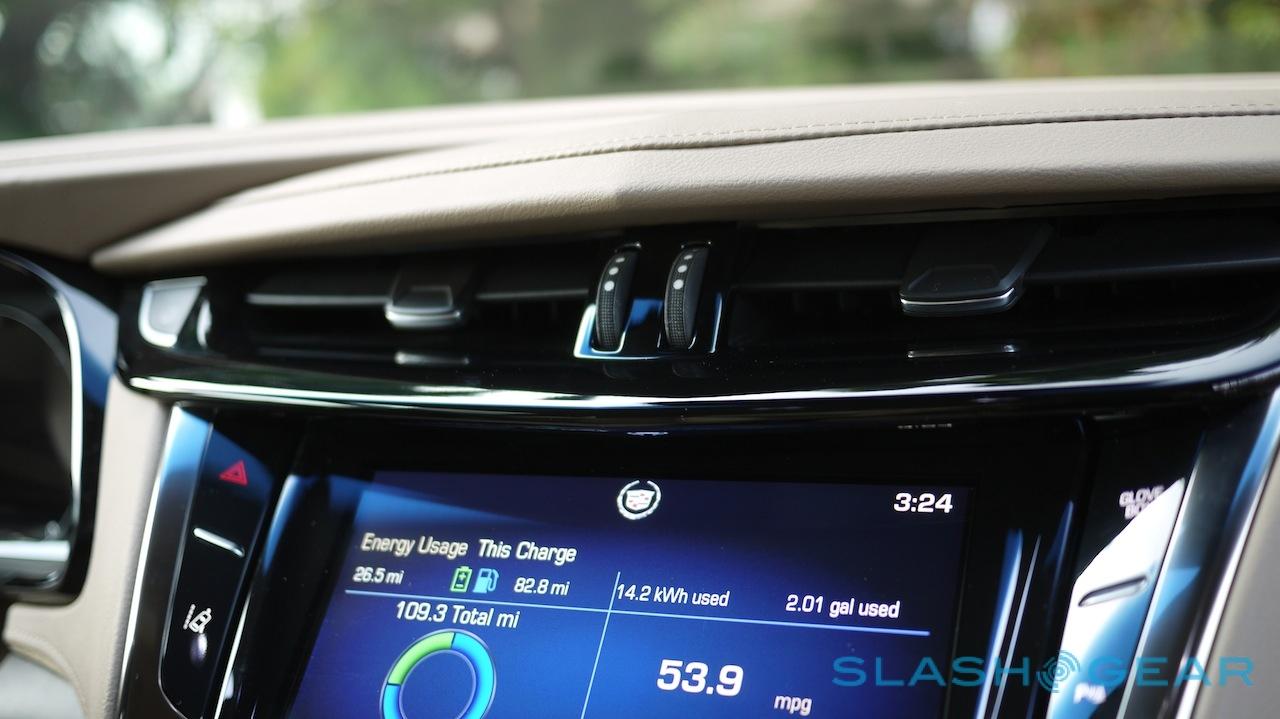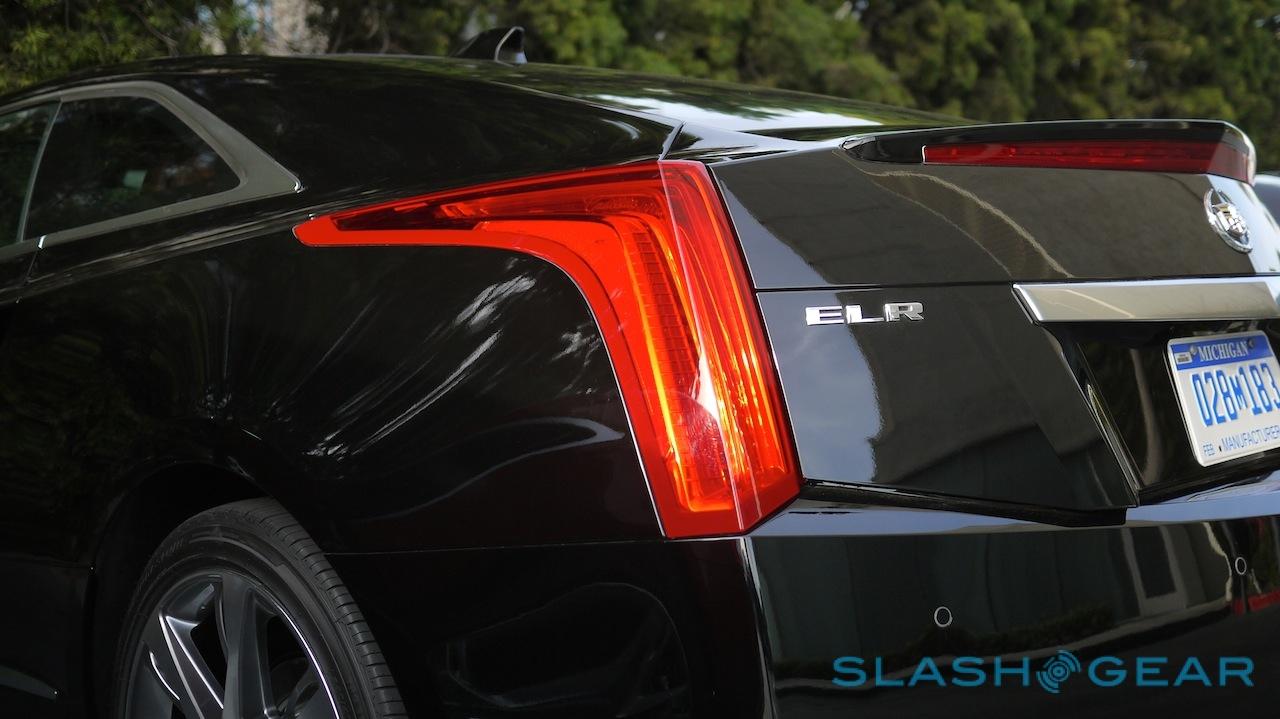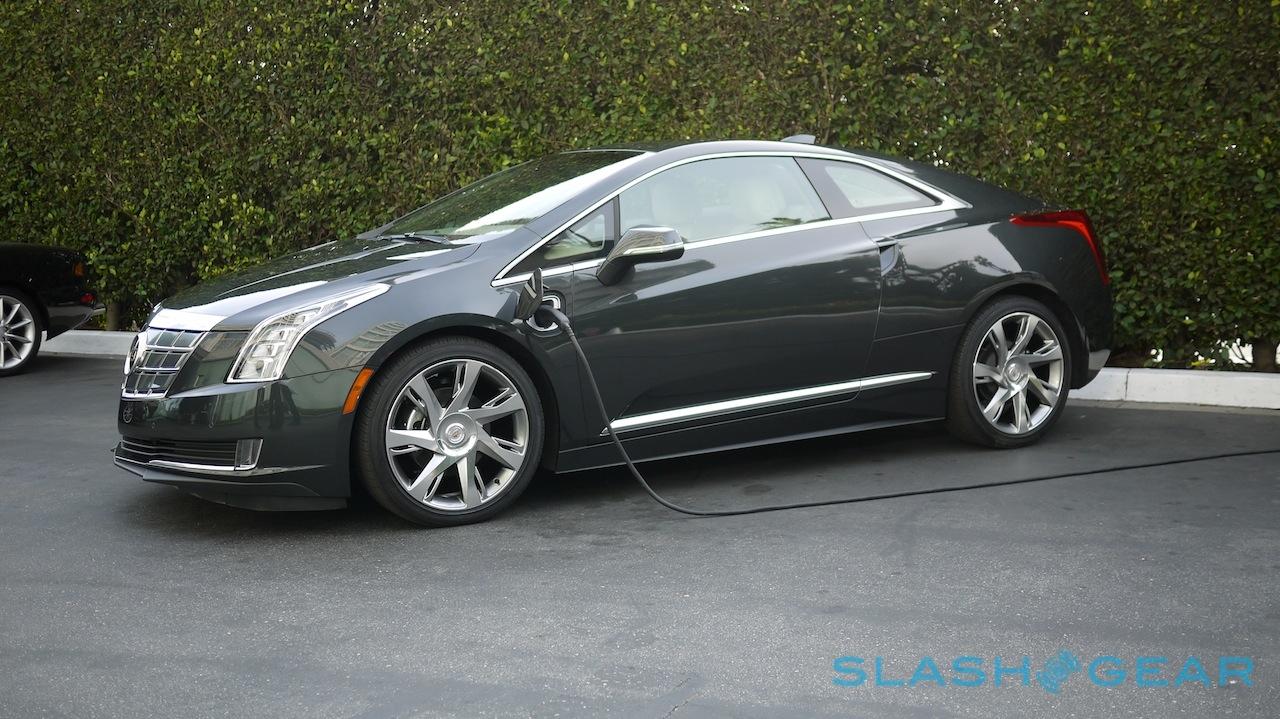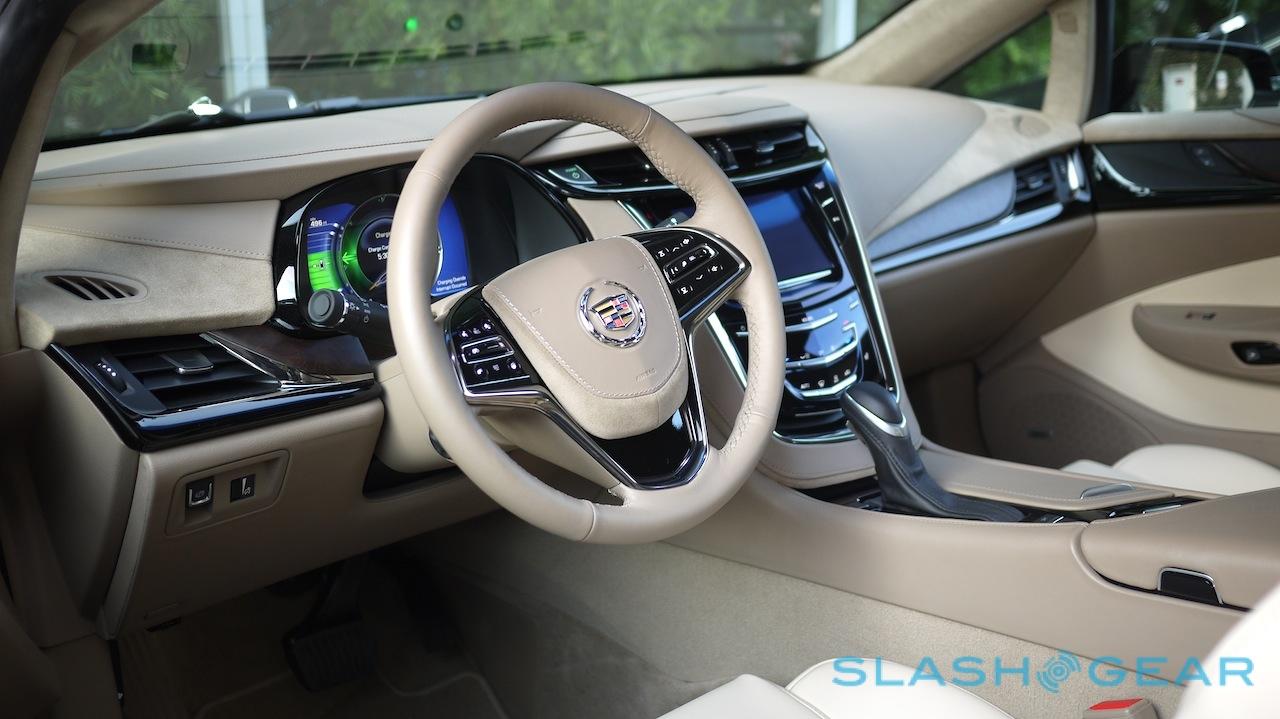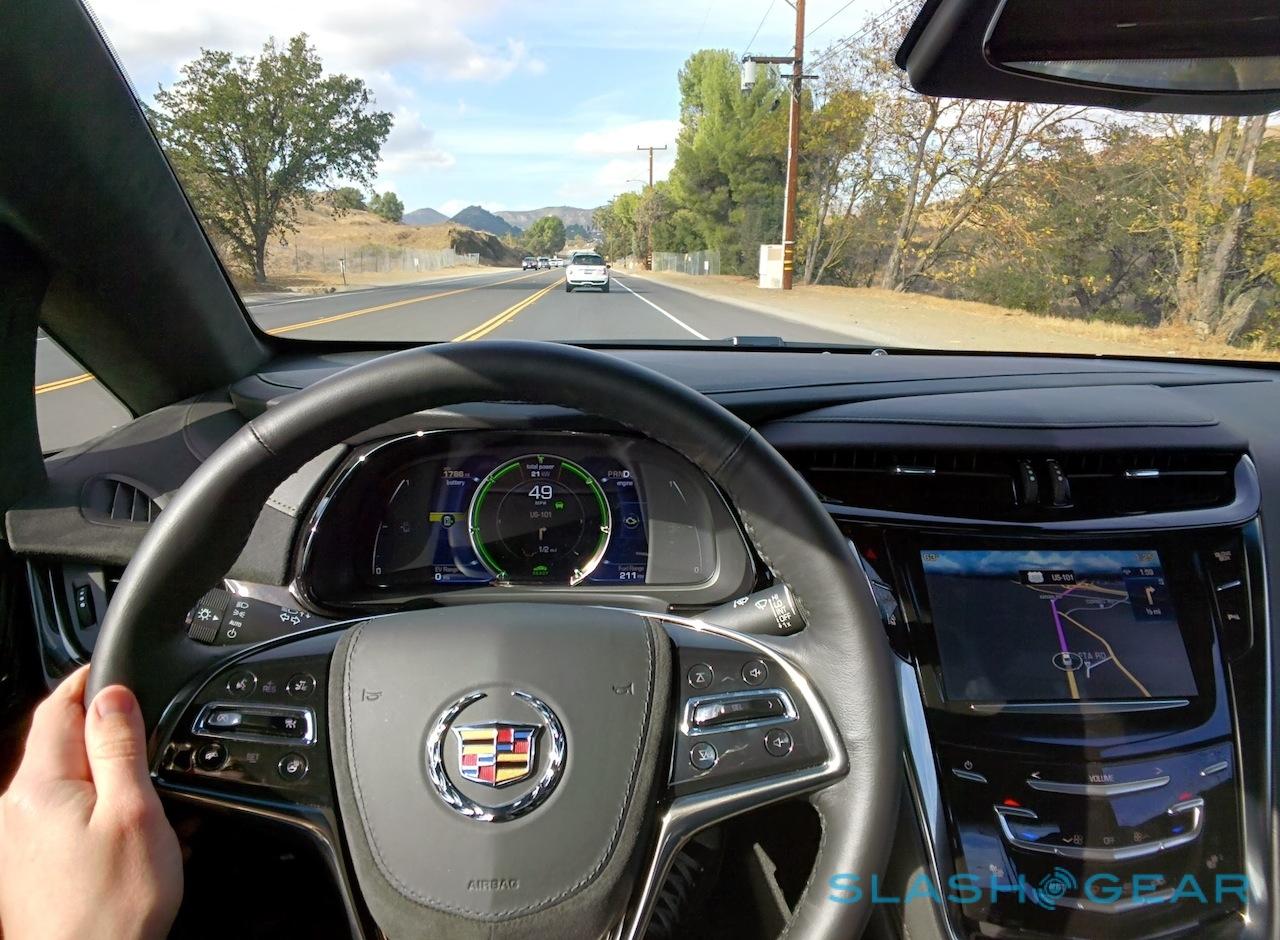Cadillac ELR first-drive - Tesla gets competition
The Cadillac ELR is an important car for quite a few big reasons. Cadillac itself admits it has been playing catch-up in the luxury sedan market, pitching the ATS and CTS as more virile US alternatives to the typical options from Mercedes-Benz, BMW, and Audi, but with the electrified ELR it's finally an opportunity to strike at a niche where the Germans aren't playing yet. Borrowing the torquey electric drive of GM's Volt but leaving behind any sort of hair-shirt eco sacrifice, it's an angular slab of luxury that, thanks to its own onboard generator, promises to be the headache-free EV discerning drivers have been waiting for. Then again, it really should be: with a sticker price just short of $76,000, the ELR is firmly in Tesla territory. We grabbed the keys of one of the very first production ELR off the line to see if Cadillac has a potential winner on its hands.
Design
Cadillac signaled the design of the ELR back in 2009 with the Converj concept, a 2+2 coupe intended to distill electric drive into a model that could help lower the typical age of the marque's average driver. After some to-and-fro about whether it was merely a design study, a development frippery, or something more serious, GM finally gave the project the green-light to go to production.
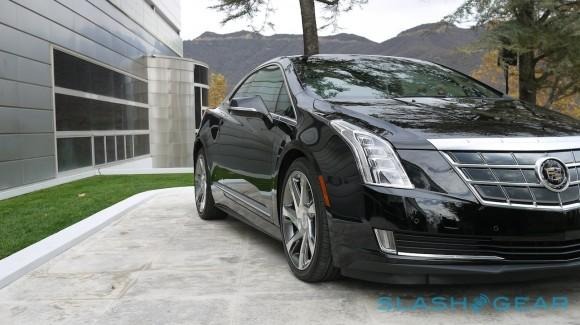
It's not usual for a concept to spawn a production car, but we're used to seeing the design being heavily watered-down before it reaches forecourts. Cadillac has shown admirable restraint – or, perhaps, an admirable degree of frivolity – in the ELR's final design, keeping much of the angular, sharply-creased style that made the Converj so appealing.
It's clearly a Cadillac, with all the cues of the latest range like narrow, upright light clusters, and pronounced cut-lines, but the ELR cranks the whole aesthetic up a notch or two. It's surprisingly small, for something with the Caddy badge at least, and the standard 20-inch wheels pushed out to the corners give it a meaty, aggressive stance that's particularly distinctive against the overly-smoothed design language many brands have adopted in the name of aerodynamics.
That's not to say the ELR approaches the wind tunnel bluntly. In fact, it has a drag coefficient of just 0.305, aided by the flush fascia and grille – which hides active-shutters for controlled cooling – careful tapering to the corners so that air can slip past unchallenged, a rear spoiler, and aggressive raking to the front and back glass. The door handles are notches cut out of the bodywork, and popping them causes the frameless glass to drop slightly as the long doors open broadly.
It's useful that they do, since the back of the ELR is a snug place both to sit and to access. A second set of power adjustment controls are on the front seat shoulders, along with levers to tip the backrests forward, though there's still a little contortion to be done if you want to enter gracefully, in no small part because of the low roofline. A high center tunnel cuts the rear in two, so there's no sliding across to make room.
The charging port is hidden under a flap on the driver's side front fender, and is hooked into the side mirror lamps which pulse green during charging and go dark when the batteries are full. Cadillac has thrown LEDs galore at the car, with front, rear, and side lamps all using the more power-efficient technology; the front turn signals also double as daytime running lights, switching between yellow and white accordingly.
Altogether, it's a striking looking car, and that's unsurprisingly proved divisive. Although there are points where the creasing and pinching looks over-designed, overall we'd much rather have the aggressiveness of the ELR than, say, the slab-sided and altogether average design of the Volt, and the Cadillac's purposeful wedge shape is an eye-catching alternative to the more restrained, Savile Row elegance of a Tesla Model S.
Engine and Performance
The ELR has both an electric drive system and a gas-powered engine, so does that make it a hybrid? Cadillac prefers the term "Extended Range Electric Vehicle" (EREV), since unlike in a traditional hybrid such as Toyota's Prius, the gas engine never actually drives the wheels directly. Instead, it's used as a portable generator, capable of recharging the ELR's onboard batteries.
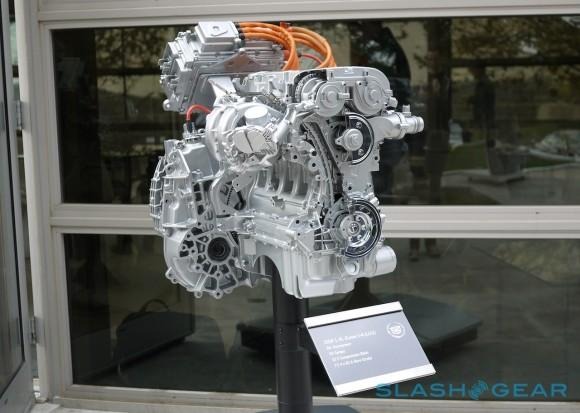
Main drive, therefore, is handled solely by the electric motor, and Cadillac suggests that the roughly 35 mile range provided by the 16.5 kWh li-ion battery pack is enough that the average commute can be done with entirely zero-emission driving. The battery itself is T-shaped and runs down the center of the ELR, in-between the front and rear wheels, and the electric drive musters 295 lb-ft of torque which, like all electric-only cars, is entirely available from the moment you hit the accelerator. Cadillac says it'll recharge in around 4.5 hours from a 240V charger, though a standard 110V outlet will obviously take longer.
The gas engine, meanwhile, is a 1.4-liter unit which kicks in to recharge the battery pack. With it in play, Cadillac estimates the total range – starting out from a full battery and a full tank – to be around 345 miles, with the reassurance that you can extend that in minutes by pulling into a regular gas station.
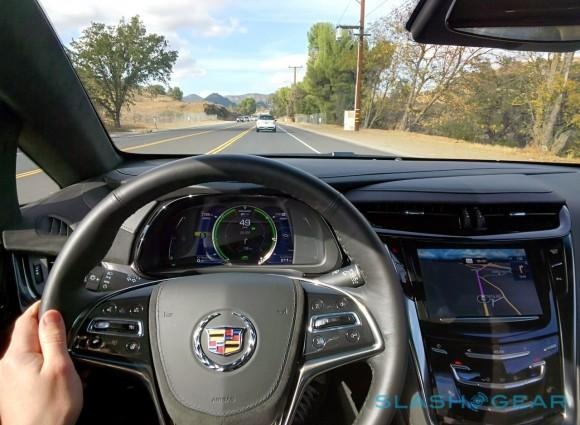
There's also control over how the ELR uses its power, with the car offering four different driving modes: Sport, Tour, Mountain, and Hold. In Sport, accelerator and steering response are tautened, and torque applied more readily; Tour offers a more balanced compromise between EV perkiness and Caddy-trad luxury. Mountain mode readies the car for hilly terrain, keeping some battery power in reserve that can be used for a squirt of extra grunt should the roads get challengingly steep.
It's Hold mode that's probably the most interesting, certainly if you're not wanting to leave the electric/gas decision entirely to the ELR. Boiled down, it's manual selection over all-electric or gas-extended drive: Cadillac says that, since battery-only drive is more efficient in city driving, some owners will prefer to reserve the charge for that part of their commute, turning to the gas engine during highway driving.
Cadillac's other interesting twist on the EV model is the ELR's Regen on Demand system, which repurposes steering wheel paddles for electric intentions. Whereas they're usually associated with gear-changes, since the ELR lack a traditional mechanical gearbox Cadillac instead uses the paddles to trigger a more aggressive regenerative braking system, pushing power back into the batteries as well as slowing the car.
Regenerative braking happens whenever the brakes are applied, with the ELR first converting momentum into charge to slow the car, before easing in regular friction braking from the 4-channel anti-lock system (which also has a Brake Force Distribution system to dynamically adjust where the braking force is applied, front and rear). Pulling one of the paddles, however, temporarily triggers the regenerative system; let go of the paddle, and the regular drive resumes.
Cadillac is billing Regn on Demand as a dynamic driving feature, comparing it to a downshift in a manual gearbox. It never actually brings the ELR to a stop, but can be used to quickly shed speed – without wasting power – if you're approaching a tight corner, for instance.
It's a new approach to paddles, but it's one you quickly get used to taking advantage of. The effect isn't too forced – stamping on the brakes is still the way to bring the ELR to a halt with alacrity, and in fact Regen on Demand won't actually bring the car to a full stop – which makes it highly usable. In everyday driving it's much easier to quickly lift your foot off the accelerator and squeeze a paddle in response to the traffic ahead, and in fact at highway speeds the ELR will trigger the brake lamps when you use Regen to slow.
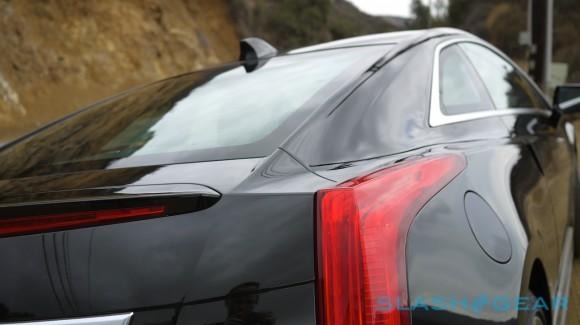
Things get more fun when you're driving keenly, though, with a quick pinch of the paddle dropping pace as you head into a corner, then the instant torque of the EV drive throwing you out the other side when you drop your right foot again. There's actually the same amount of torque on tap as you'd get in a BMW M3, though the ELR delivers it straight away rather than needing a gas engine to spin up.
Push the ELR, then, and it handles well for a luxury coupe. This isn't a sports car, but we took the Cadillac on an extended drive across highways, city streets, and winding mountain tracks, and it didn't stint at any of them. The combination of two sets of motors and luxury accommodation means it's not a dainty car, at just over 4,000 pounds, but it hides its heft well, and the electric power steering is precise and, particularly in Sport mode, weighted nicely. Everything is conspicuously tuned differently to the Volt, for a far more engaging experience.
Interior
One of the big criticisms leveled at the ELR is that it's a Cadillac-branded Volt, GM's much cheaper Chevrolet EV. Open the door, however, and it's clear where a fair amount of that extra money has gone: the interior is classic Cadillac luxury.
We say classic, but in fact Caddy has been making a concerted effort over the past couple of years to shed its wallowing, waterbed-on-wheels reputation, ditching the shag pile carpet and the ruched leather so unkindly compared to the average octogenarian driver's skin. The ELR is a good example of this new breed of Cadillac, though there are still some nods to over-egged luxury.
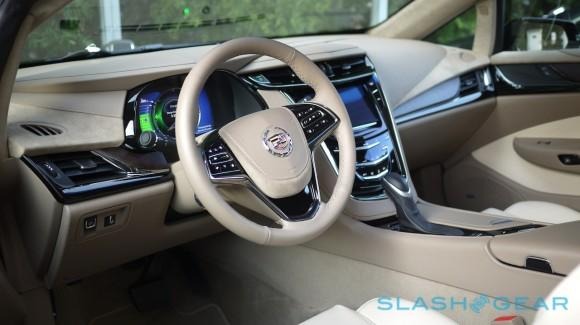
The combination of the high, steep shoulder line and the relatively low driving position means that it's a more enveloping car than previous Cadillacs. The company's now familiar CUE dashboard system – pairing an 8-inch color LCD touchscreen with touch-sensitive, illuminated buttons – tapers down to a center console that runs the length of the cabin. A similarly large LCD serves as the driver instrumentation panel, controlled by a number of buttons and a joystick on the steering wheel, and Cadillac offers a total of four different layouts to choose between, ranging from the basics through to more technical information.
As on other CUE systems, there's USB, SD, and MP3 inputs, along with support for up to ten Bluetooth devices with streaming, and you can use a phone's data connection to pipe through streaming media services like Pandora too. In addition to the touch-sensitive keys – which light up, along with extra touchscreen buttons, when your hand approaches the display – the lower fascia panel can hinge up automatically, to reveal a cubby for phones and other devices. Voice control is supported too, with text-to-speech for reading out SMS messages.
CUE has a lot of features, but manages to deliver them in a mostly user-friendly way. We're still not entirely convinced by the touch-sensitive keys (though Cadillac insists that its owners love them) which, even with the ridge lines, aren't as easy to find with your fingertips as manual controls when you're trying to keep your eyes on the road, but the UI is generally clean and the ability to corral music, POIs, addresses, phone numbers, or other CUE commands into favorites does make living with it more agreeable.
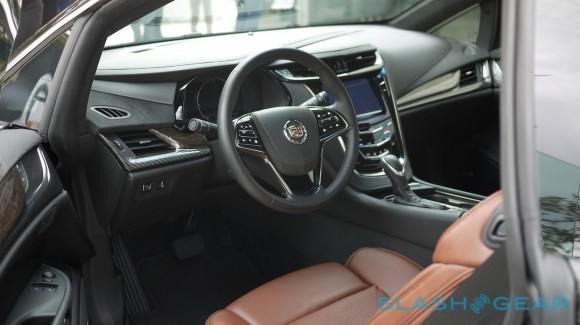
There's no dual-view magic, showing different pictures to the driver and the front-seat passenger, but the 8-inch panel can be cut in two to show both media and navigation simultaneously. CUE has borrowed from tablets like the iPad, too, with things like pinch-zooming of maps, and that makes a big difference versus tapping through the usual zoom keys. A Bose 10-channel audio system with active noise cancellation is fitted as standard, and fills the cabin well. Unfortunately, the noise from the gas engine itself is less aurally pleasing, noticeable as a faint grumble when it kicks in automatically, and then droning quietly while it works on refilling the batteries.
The leather-clad seats are snug and supportive, with plenty of side bolstering. In the rear, it's tight, but the seat backs at least fold down so that you can fit in more luggage should you need to. It'll have to be long and low, though, whatever it is: although the ELR looks like it should be a hatchback, in fact it has a tiny little trunk opening that reveals a surprisingly low, though fairly broad, area. It's reasonably deep, especially once you get past the bottom lip, but if you have big suitcases you may struggle to fit them in.
Of course, Cadillac couldn't resist some more outlandish fripperies in the ELR's cabin. The front cup-holders, for instance, are covered by a motorized panel which, once you nudge it open or closed, whirs into place itself. It's not entirely clear why the average ELR driver would need that – we could maybe understand if the car refused to accommodate another cup of coffee if it decided you were getting too twitchy behind the wheel – and the rear passengers suffer the indignity of opening and closing their cup-holder manually, since while it looks the same it lacks the automation.
There's also a fair amount of LED lighting, though the choice of cabin finishes makes more of a difference to how it feels inside. On the one extreme there's the "cashmere" cream scheme, with pale leather seats, and a mixture of matte wood, leather, and sueded-microfiber on the dash, which leaves the inside of the ELR feeling bright and reasonably airy.
At the other extreme, however, there are black and tan leather seat choices, with real carbon fiber trim for the dashboard, and an overall feel more like the inside of Darth Vader's helmet. That's not a bad thing, we hasten to add: it certainly suits the ELR's rakish style, and the cabin feels a closer, more focused place to sit, perhaps more akin to a two-seater than a 2+2. Either way, fit and finish are excellent and the touch-points are high quality.
The ELR experience doesn't actually end when you step out of the car itself, however. Cadillac offers its RemoteLink service and a smartphone app that allows monitoring and control over the charging process. Powered by OnStar, the system means you can choose whether to begin recharging as soon as you plug in, or delay it until cheaper electricity rates start.
Pricing and Value
We knew the ELR was never going to be cheap: Cadillac had been clear it was to be positioned as a luxury coupe first and foremost, that just so happened to heap on the eco-credentials as they'd add to the driving experience. Still, the $75,995 sticker price when the ELR goes on sale in January 2014 came as a surprise nonetheless.
Depending on where you live, you could qualify for up to $7,500 in tax credits toward the cost of the car, potentially bringing it down to $68,495. The standard kit-list is admirable too, what with CUE and the leather trim, but there's no denying that it's an expensive car, particularly given how much is shared under the skin with the Chevrolet Volt.
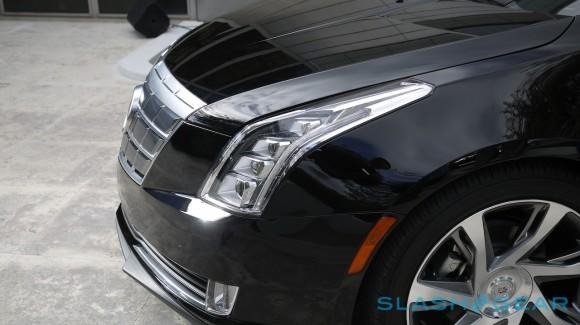
The Volt – which takes a similar electric-drive-with-gas-engine-backup approach – starts at $34,185, pre-credits, for the 2014 model. Certain options aren't available, of course, to bring it up to the exact spec of the Cadillac, but adding in premium trim with navigation, and some of the safety features like lane-departure warnings, brings that up to $37,560, roughly half the price of the ELR.
Of course, Cadillac would rather you not compare the ELR with the Volt. Instead, GM is aiming for the same sort of luxury eco-warrior niche that Tesla currently occupies, though with the proviso that the Model S is a five seater sedan where the ELR is a 2+2 coupe. The entry-level Model S starts at $71,070, though is of course eligible for the same tax credits as the Cadillac.
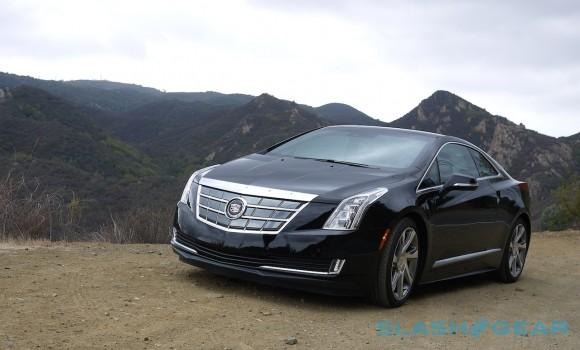
Is the ELR overpriced or merely pitching itself at the most obvious competition? Platform sharing is certainly nothing new, with cheaper models in every marque's line-up dipping into the same component bins as more expensive cars; to instantly criticize the ELR for its Volt similarities perhaps naively ignores the nature of the car industry as a whole. Meanwhile the sum total of a car is more than its drivetrain: after all, the Toyota RAV4 EV uses a Tesla-supplied powertrain, but the two are seldom pitched to the same buyers.
Wrap-Up
The electrified car market is a tough one to predict, and to succeed in. Toyota proved there was a market for hybrids with the Prius, and Tesla a market for luxury EVs with the Model S, but in-between we've seen middling sales of cars like the Volt, Leaf, and other mid-tier options. Cadillac certainly isn't playing in those mainstream waters with the ELR, but that means it needs to convince luxury car buyers that its coupe brings something truly interesting to the table by doubling up on its motors.
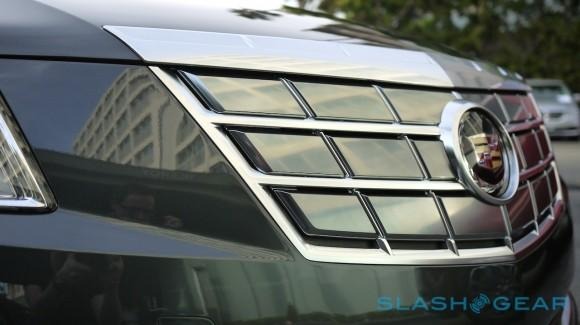
That's tough to explain on paper, but behind the wheel of the ELR it starts to make a lot more sense. For a start it's a truly beautifully constructed, luxury-specified car to be in; the cabin is perfectly appointed and the authentic materials work well in both light and dark color schemes. On the outside the design is contentious but striking, and we're fans of Cadillac's aggressive aesthetic (as well as how it has evolved to the point of the ELR, with some pleasing interplay between sharp lines, Stealth Bomber-esque angled surfaces, and sinuous curves).
Best of all, it's great to drive. On the one hand, you can treat it as a luxury tourer, whirring along in economical electric mode (but knowing that you could still embark on a road-trip without worrying about mapping out charging points along the route) in cosseted comfort. On the other, in Sport mode and with ample use of the clever Regen on Demand paddles – which we now want to see on every EV – it's an engaging drive that feels well-planted on the road and is, thanks to that onrush of torque, certainly capable of putting a smile on your face (and encouraging you to take more interesting roads rather than the highway).
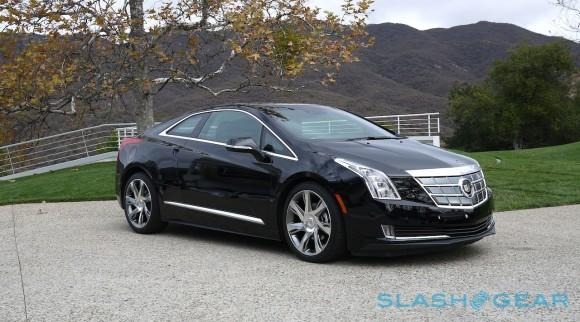
Is it worth the premium price tag? If we were in the market for a luxury coupe, it would certainly be on our shortlist. What makes the ELR interesting is that it twists the thinking on electrification: it's not used simply to satisfy eco-credentials, but because it delivers real advantages to the driving experience. Silent and economical cruising in day-to-day use, with the benefits of instant torque and the fun Regen paddles for when you want to get more involved. That, plus the clear step up in Cadillac build quality, makes it a more than worthy contender.

